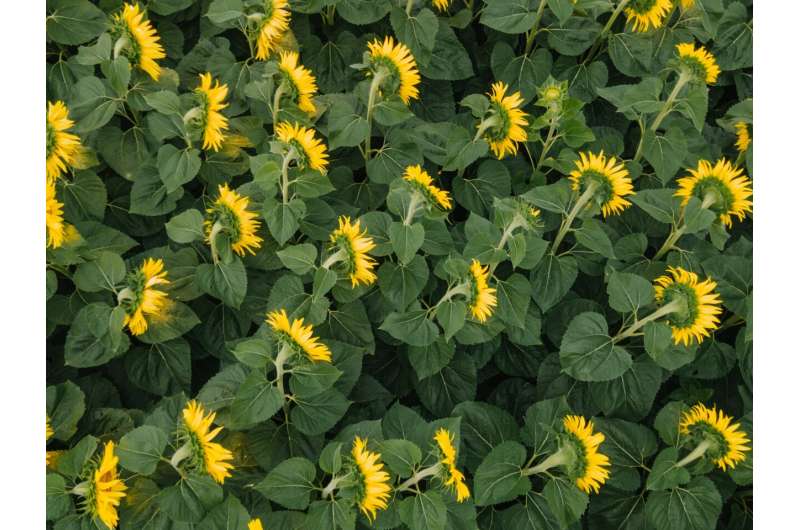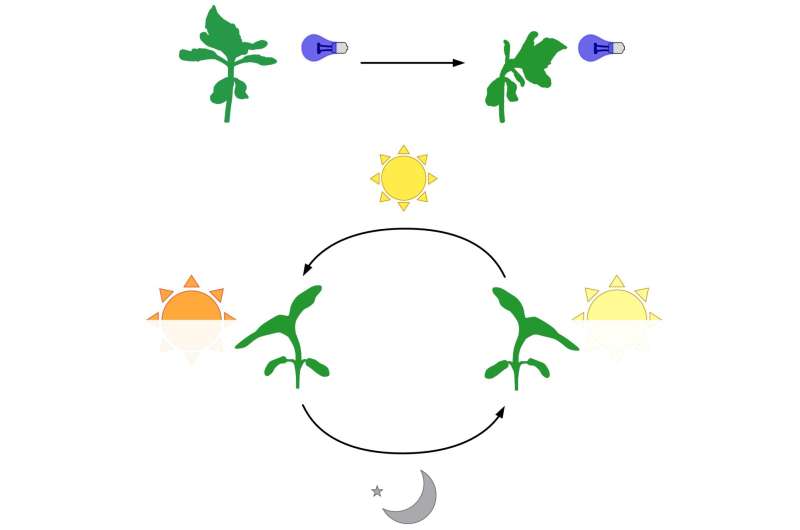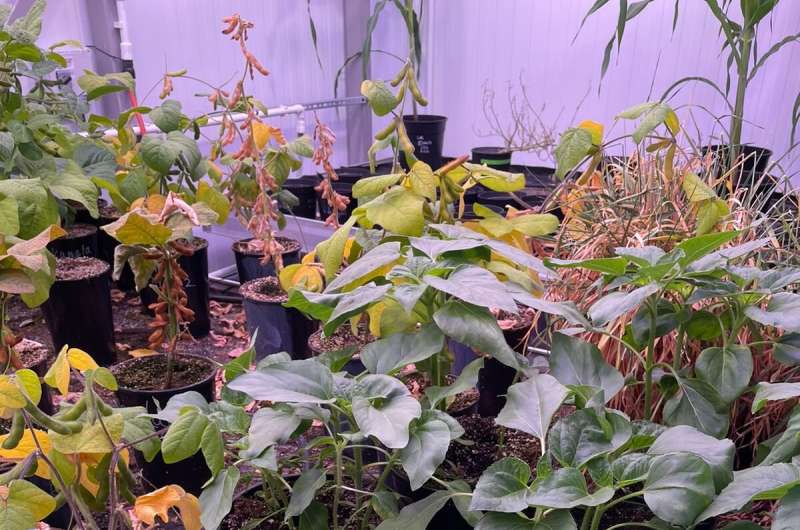This spring when I was researching clematis varieties for the cutting garden, I stumbled upon an interview on Grace Alexander’s blog with a Ukrainian grower named Alla Olkhovska. I then started following Alla on Instagram and was completely taken aback by her beautiful photography, her unusual seed offerings, and most of all her story.
Alla, her husband Vitaliy, and her family live in the eastern part of Ukraine, about 20 miles south of the Russia-Ukraine border. When the war started in February of 2022, Alla was unable to leave the country due to Vitaliy’s severe health issues and being the primary caregiver for her elderly grandmother and mother-in-law.
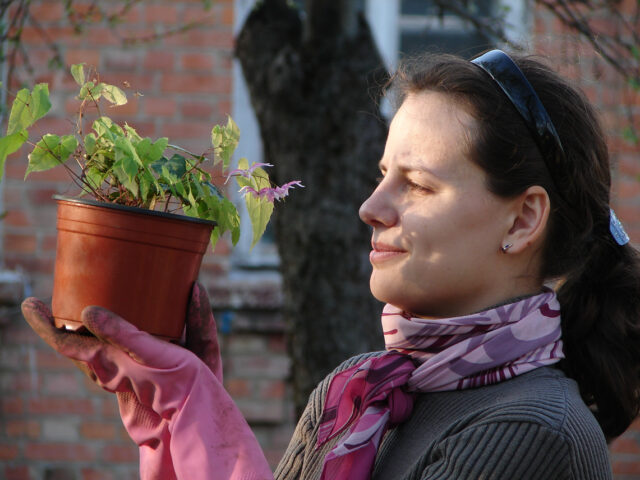
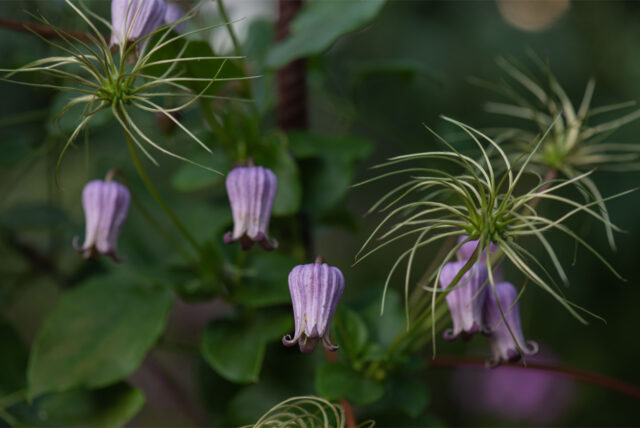 After learning about Alla and continuing to follow her journey, I realized just how special her story was and knew it needed to be shared with the world. Over the past few months, Alla sat for numerous interviews, shared hundreds of photographs, filmed nearly 200 videos with her old iPhone, and we even found a talented local cinematographer to spend a few days with her in the garden. It’s a bit of a miracle that it all came together like it did, and it feels very much meant to be.
After learning about Alla and continuing to follow her journey, I realized just how special her story was and knew it needed to be shared with the world. Over the past few months, Alla sat for numerous interviews, shared hundreds of photographs, filmed nearly 200 videos with her old iPhone, and we even found a talented local cinematographer to spend a few days with her in the garden. It’s a bit of a miracle that it all came together like it did, and it feels very much meant to be.
All of this footage came together in the most beautiful and poignant documentary film called Gardening in a War Zone. I highly encourage you to set aside some time in the next few days to watch this special story rooted in beauty, inspiration, and hope.
For more of the backstory on how I came to know Alla, her passion for sharing beauty, and why this project matters so much, be sure to watch this special First Look. I recommend starting with this video first before watching the full film.
We also had the opportunity to interview Alla (which you can read below) about her garden, her love of clematis, and her new book, Clematis, which dives deep into this special group of plants. At the bottom of this interview, you’ll find all the ways to support Alla and enter a wonderful giveaway to win a copy of her book and some of her magical clematis seeds.
This interview has been edited for clarity and brevity.
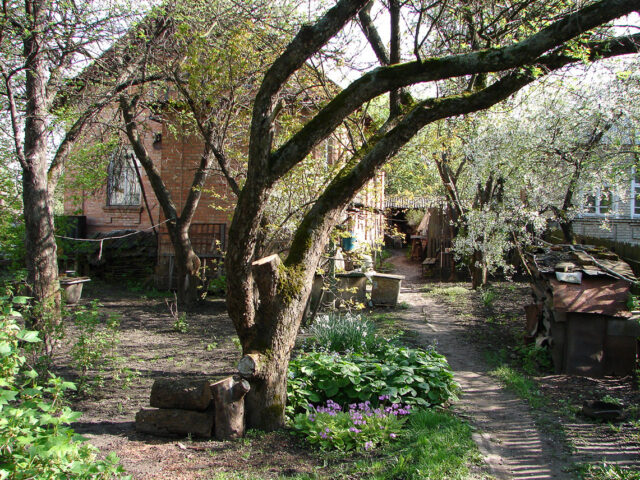
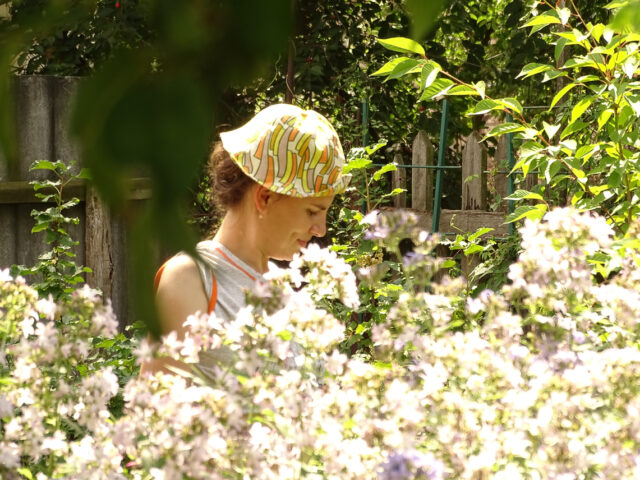 Alla, thank you so much for taking the time to share more about your flower journey. You live in Kharkiv in the Eastern part of Ukraine, and your garden is located in the heart of the city. Can you tell us what it’s like? What kind of plants do you grow?
Alla, thank you so much for taking the time to share more about your flower journey. You live in Kharkiv in the Eastern part of Ukraine, and your garden is located in the heart of the city. Can you tell us what it’s like? What kind of plants do you grow?
My garden is my lifelong love.
It’s imperfect, but I’m constantly thinking whether I really would like it to be perfect and I think the answer is no.
When you enter through the very old wooden gate made by my great-grandfather 50 years ago you will see the first half of the garden. It is divided into two almost equal parts. The first part is somewhat lower and has standing water in the spring. As a result, it can be dangerous for many rare plants. So, in this space, I grow easy-care plants that will withstand the conditions.
In the place where the water doesn’t reach, I made a big peony flower bed. There are lots of modern varieties which I managed to get from other gardeners, and old varieties which were planted by my great grandmother! They are the biggest treasures for me. The bushes were old and weak, so I divided them and took care of them and now they are covered with big double, scented flowers every year—what a joy!
Walking along the house you enter the second part of the garden which is much more exquisite. I tried to follow a natural planting style so my clematis are often vining over the bushes and up into the trees, and there are rare perennials growing under several old apple trees that were planted by my great-grandfather. I’m especially proud of the pine trees which I grew from seed and now they are twice as tall as me! I can say that my garden is a paradise for me. It’s an oasis of serenity and positive emotions in a desert of hostilities and missile attacks. When I work in the garden and there are no terrible air alert sounds, I forget for a while all the horrors of the war in which we live.
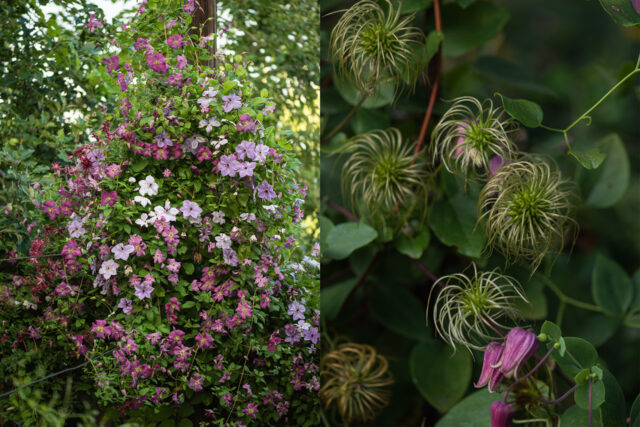 You have so many rare and interesting plants growing in your garden, but your specialty is clematis. What do you love about these plants in particular?
You have so many rare and interesting plants growing in your garden, but your specialty is clematis. What do you love about these plants in particular?
Oh, clematis is my special love! This is no ordinary flower; it is a vast and intricate genus comprised of lots of species from all over the world! Of course, it is composed of mostly vigorous, woody, climbing vines. But some varieties like Clematis integrifolia are shrubby, like an herbaceous perennial.
The sizes vary tremendously as well, starting from dwarfs such as creeping Clematis marmoraria or Clematis columbiana var. tenuiloba ‘Ylva’ and finishing with the gigantic vines such as Clematis montana or Clematis armandii, which easily reach 7 m (23 ft) high or more!
If you plant species and cultivars of various groups, you will receive continuous clematis flowering from mid-spring up until frosts, which is really impressive!
Another fascinating aspect is the intricate dance of colors and shapes that clematis exhibit. The flowers range from delicate bells to impressive big starbursts, and the color palette spans the entire spectrum. It’s a living kaleidoscope that transforms the garden into a captivating work of art. I am absolutely amazed by the versatility and adaptability of clematis.
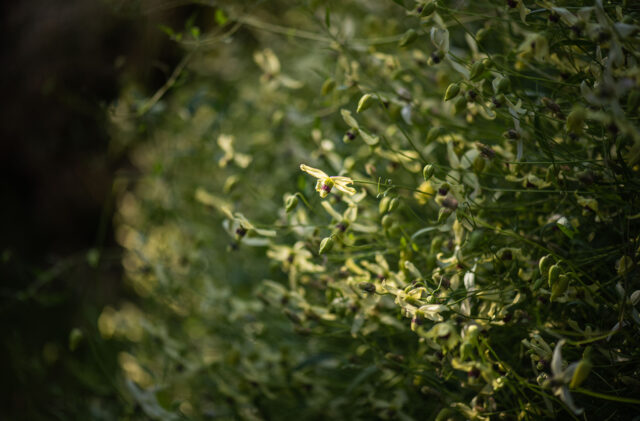
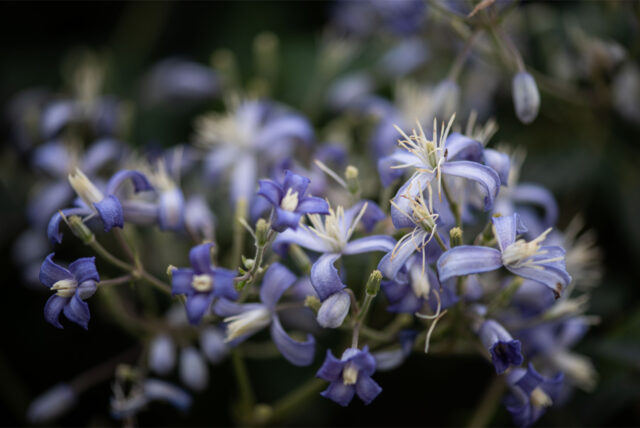 There are nearly 400 unique species of clematis but as I understand from your book, they fall into three main groups. Can you talk a bit more about the different groups, their bloom time, and their pruning needs?
There are nearly 400 unique species of clematis but as I understand from your book, they fall into three main groups. Can you talk a bit more about the different groups, their bloom time, and their pruning needs?
Clematis are subdivided into three main groups which have similar characteristics and requirements, so when you buy your clematis you should pay attention to what botanical group it belongs to. By knowing the group, you will be able to determine the conditions the plant needs, including planting and growing tips, and you will be able to determine its habit and approximate height.
There are three main groups—Group 1, Group 2, and Group 3—and each one is pruned differently:
Group 1: No Pruning or Light Pruning. This group includes early-flowering clematis varieties that bloom on the previous season’s growth and typically flower in spring. Pruning needs are minimal, usually limited to the removal of dead or damaged wood and light shaping. The primary objective is to maintain the plant’s natural form and remove any unwanted growth. Pruning is typically done after flowering, around late spring or early summer.
Group 2: Light Pruning. This group consists of large-flowered hybrids that bloom both on the previous season’s growth and on new growth. These clematis produce an initial flush of flowers in late spring or early summer on old wood, followed by a second flush in summer on new growth. Usually, if the variety is double, the first flowering on old wood will be double while the second wave of flowering on new growth will be single. Pruning in this group involves removing dead or weak stems, controlling size, and shaping the plant. The best time to prune is in late winter or early spring before new growth starts, but you can also do light pruning after the first flush of flowers to encourage more blooms later.
Group 3: Hard Pruning. This group is comprised of late-flowering clematis that bloom exclusively on new growth. These clematis varieties flower from mid- to late summer. Pruning for Group 3 clematis involves more drastic measures to stimulate vigorous growth and abundant flowering. In late winter or early spring, cut all the stems back to a pair of strong buds around 30 cm (12 in) above ground level. This severe pruning promotes new growth and ensures the best display of flowers during the summer. The shoots of some varieties may die down to their base during winter, in this case, you can completely remove them in early spring.
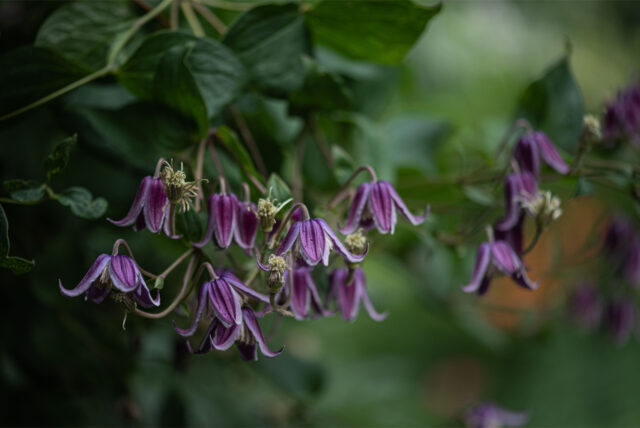 If people are interested in growing clematis, what do they need to know? Are there any varieties that you’d recommend for beginners?
If people are interested in growing clematis, what do they need to know? Are there any varieties that you’d recommend for beginners?
First of all, gardeners shouldn’t be anxious about planting clematis because there are lots of varieties that will grow with little care. The most common mistake many new gardeners make is planting large-flowered varieties from Group 2. I have very few of these varieties in the garden because they are difficult and inclined to wilt.
If you plant varieties from Group 1 and Group 3, you will be able to enjoy your plants without struggling with them constantly. I just adore the bell-shaped varieties, which have turned out to be very stable in the garden.
I also highly recommend all Clematis integrifolia varieties and deriving hybrids (‘Fascination’, ‘Jan Fopma’ (pictured above), ‘Josie’s Midnight Blue’, and many others), and bushy clematis such as Clematis stans, Clematis heracleifolia, and their hybrids. Atragene is my early spring love which I just can’t imagine my garden without!
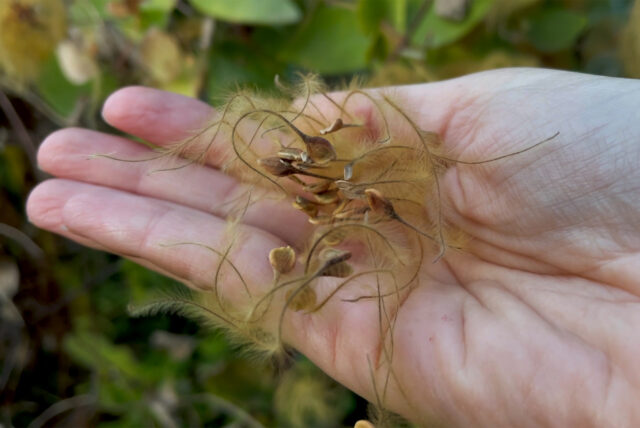 Until very recently, I was unaware that so many clematis varieties could be started from seed. Can you share more about this process?
Until very recently, I was unaware that so many clematis varieties could be started from seed. Can you share more about this process?
My favourite way of sowing clematis seeds is the natural way. I do not like sowing in pots because it requires too much time and additional care, and you need to constantly check if they are too wet or too dry. Since I do not live where the garden is located, sticking to all these procedures is next to impossible, so I normally sow them directly into the garden. Of course, in this way, they take longer to germinate, but for me, this method remains the most effective.
You can also start seeds in small pots using a stimulant called gibberellic acid (GA3). This acid is a natural growth hormone, and since it promotes seed germination, it is used to increase the percentage of germination. Here are instructions on how to sow clematis seeds using gibberellic acid:
- Place the seeds in a tea bag.
- Optional: Treat the seeds with a fungicide for 24 hours (I use Bayer, Syngenta, etc.).
- Rinse the seeds with water 3 to 4 times.
- Soak the seeds in water for 1 to 2 days.
- Carefully peel off the outer hard shell of the seeds (you can use, for example, nail scissors). Treat the seeds with a solution of 125–250 ppm gibberellic acid (I found that 1 ppm = 1 mg/kg). If you use a concentration of 250 ppm treat them for 6 hours or if you use a concentration of 125 ppm treat them for 12 hours at room temperature.
- Wrap the seeds in a damp paper tea towel and place them in a ziplock bag.
- Store the bag at room temperature from 2 weeks to 2 months.
- Check the contents of the package every 3 days.
- As soon as you notice the appearance of the root, plant the seeds in pots or a small container.
- Do not forget to water the planted seeds regularly. Shoots in pots will appear approximately 2 months after planting. The percentage of seed germination when using gibberellic acid ranges from 40 to 100%.
- Once the seedlings have developed several true leaves, they can be transplanted into larger containers. Be sure to handle the seedlings carefully to avoid damaging the delicate roots.
- Clematis vines need a support structure to climb on from the very beginning of their life, so be sure to provide a trellis or other support for the seedlings as they grow.
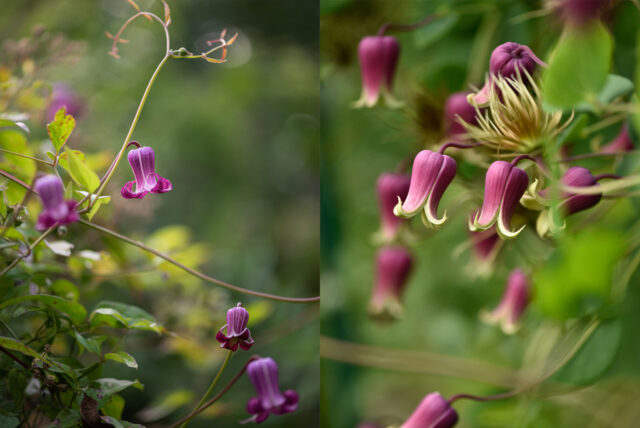
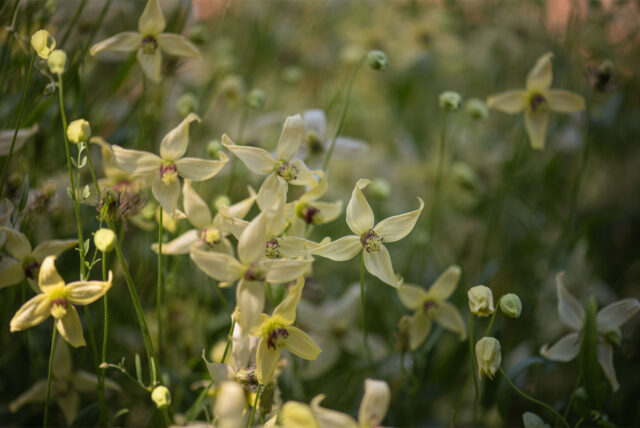 You have a huge offering of seeds that you grow and also sell. How many varieties of clematis do you currently have in your garden, and can you share some favorites?
You have a huge offering of seeds that you grow and also sell. How many varieties of clematis do you currently have in your garden, and can you share some favorites?
You know, I never counted the exact number of the clematis I grow, but my collection continues to expand because I sow more and more seeds every year. I definitely have more than 80 clematis varieties in the garden now.
Naming my favourite varieties is a really challenging task, as I love them all! If we talk about vining clematis, I just adore all the bell-shaped varieties. Clematis ‘Princess Red’ (pictured above, top left), which has a pleasant fragrance, Clematis glaucophylla (pictured above, top right), Clematis viorna, Clematis viorna ‘Liviana’, Clematis pitcheri, Clematis versicolor, Clematis ‘Peveril Peach’ (also known as ‘Sonnette’), Clematis ‘Fascination’, Clematis ‘Jan Fopma’, Clematis ‘Josie’s Midnight Blue’, Clematis crispa, Clematis crispa ‘Titipu’ … I just can’t stop listing them. The main thing is that all of these varieties flower throughout the summer, and some even bloom up until the first frosts.
If we talk about non-vining, bushy varieties, I just adore Clematis stans and Clematis ‘I am Stanislaus’. Both of them flower abundantly in autumn with blue flowers. They are extremely easy to grow—you just plant them and forget, but in autumn you have all this beauty!
Clematis ‘Sundance’ (pictured above, bottom) is also my autumn favorite! It’s so abundant, but the main beauty is its seed heads, which are just extra gorgeous.
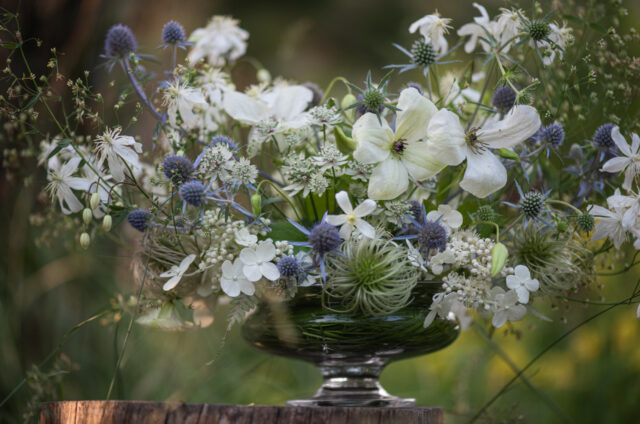
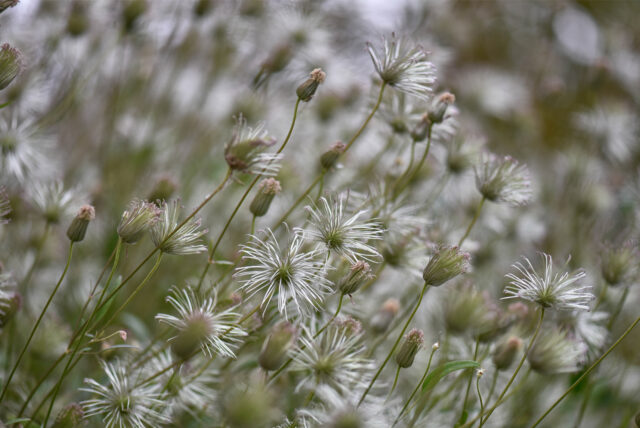 I love incorporating clematis vines into arrangements, especially larger statement pieces. What are your favorite varieties for arranging with? Do you have any tricks for maximizing vase life?
I love incorporating clematis vines into arrangements, especially larger statement pieces. What are your favorite varieties for arranging with? Do you have any tricks for maximizing vase life?
I just adore garden arrangements and I make them all the time as soon as the first flowers start blooming in the garden! The only thing I do to prolong the vase life is regularly changing the water.
Using clematis as a cut flower is a very interesting topic! Bell-shaped clematis are among the best for arranging as they have a very good vase life. Clematis versicolor, Clematis texensis, Clematis viorna, Clematis viorna ‘Liviana’, and Clematis ‘Kaiu’ are all good performers as cut flowers.
It may be surprising, but I love using clematis seed heads in my arrangements. They always add a touch of elegance and look so good with other flowers!
When incorporating clematis seed heads into floral designs, it is important to consider their placement and complementing elements. Their delicate nature requires careful handling to prevent damage, and they should be positioned in a way that highlights their unique forms and textures. Pairing them with other dried elements, such as branches, berries, or dried flowers, can create a harmonious composition that evokes a sense of timeless beauty.
By the way, the most beautiful seed heads are on Clematis ‘Sundance’ (pictured above, bottom), they are just amazing and a staple in any arrangement!
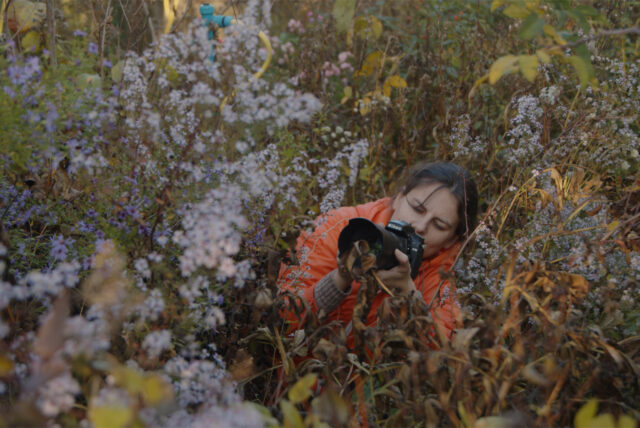
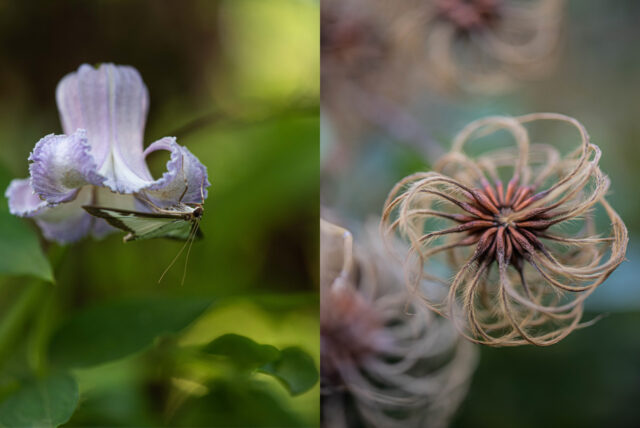 You are such a talented photographer and clearly have a passion for this work. How did you get your start?
You are such a talented photographer and clearly have a passion for this work. How did you get your start?
It all started in childhood with my father’s old Zenith camera. I wanted to take a picture of every flower and every grass, but due to the limitations that the film imposed, I had to take only family shots. It was an old Soviet camera and all the settings were manual, so it was really difficult to use and I didn’t always get beautiful photos.
I will never forget the delight that I experienced when my friend brought back from her internship in the U.S. the first digital camera with an LCD and an unlimited ability to shoot anything and everything—and even instantly see the result on the screen—just miraculously wonderful and unbelievable!
And soon such a camera was gifted to me by my father. Though it was a cheap point-and-shoot camera, it was an extremely expensive purchase for our family and my happiness had no limits! I was inspired so much!
At the same time, I had started gardening and someone told me about Facebook, and I started sharing my flower photos there and received many warm comments. Then I learned about Instagram and immediately liked it, photography was at its core. I started posting photos there and received more and more wonderful comments.
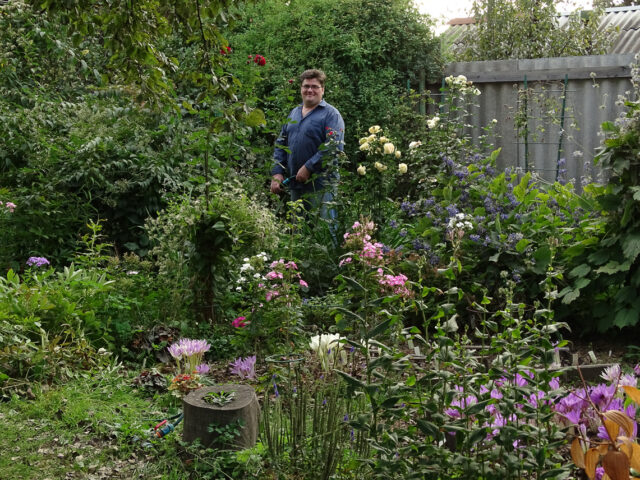 Because of this, my husband Vitaliy (pictured above) encouraged me to buy a better camera. I was against it for a long time as the purchase was too expensive for us and would make a hole in our budget, but finally, we took a loan and bought a Nikon D750 with a 105mm macro lens. Oh those wonderful peaceful times before the war when you could take a loan for a camera!
Because of this, my husband Vitaliy (pictured above) encouraged me to buy a better camera. I was against it for a long time as the purchase was too expensive for us and would make a hole in our budget, but finally, we took a loan and bought a Nikon D750 with a 105mm macro lens. Oh those wonderful peaceful times before the war when you could take a loan for a camera!
The new camera was difficult for me to use because it was really heavy and it had lots of settings which I didn’t understand easily. But when I saw the results and the photos were of such amazing quality, I decided I would learn how to take photos with this camera, and eventually, I succeeded! You can do anything when you have a strict aim and are inspired!
My Instagram followers ask me all the time to make a course on flower photography. So right now I’m working on a series of workshops dedicated to flower photography for those eager to take beautiful flower photos. As soon as I’m ready, I will make an announcement on my Instagram account.
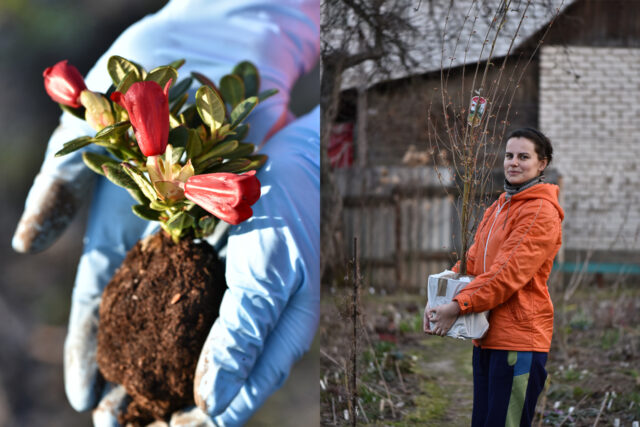 Ukraine is a very young country when it comes to gardening and has only recently been influenced by the Western world. What do you see for the future of Ukrainian gardens?
Ukraine is a very young country when it comes to gardening and has only recently been influenced by the Western world. What do you see for the future of Ukrainian gardens?
I believe that the evolution and the future of Ukrainian gardening will be marked by a harmonious blend of both local traditions and influences from Western gardening culture.
When I started growing rare plants, I was among the first Ukrainian gardeners to explore and introduce new species. I’m sure that rare plants and beautiful landscape design will develop as soon as the war finishes and people are able to live in peace and enjoy gardening again.
Many foreign gardeners just adore sowing seeds while my compatriots weren’t even aware that such a possibility existed until recently! I think the trend of growing plants from seeds will definitely become stronger. Growing from seeds is a journey that involves patience and care, and there is so much joy in witnessing life unfold. It adds a whole new dimension to the gardening experience, helps to preserve rare endangered species, and makes gardening more cost-effective, as seeds are generally more affordable than buying mature plants.
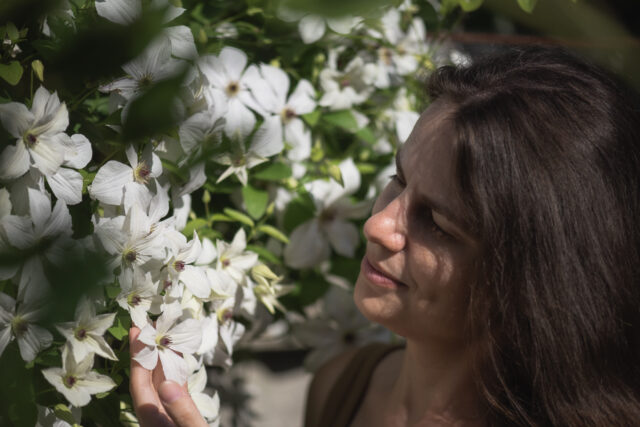
Thank you Alla for sharing your story and love for clematis with us. I am so excited for people to learn about your important work and sow your beautiful seeds in their gardens.
To honor Alla’s story and encourage more gardeners to try their hand at growing clematis from seed, we’re giving away 12 special collections that we ordered from her. Each collection includes seeds from seven of her favorite varieties, a note from Alla, and a copy of her wonderful new e-book, Clematis.
For a chance to win, please share what part of Alla’s story impacted you the most. Winners will be announced on Thursday, December 21. Please note: This giveaway is open to residents in the U.S. and Canada only.
Update: A huge congratulations to our winners: Katrina Scala, Kate Hollander, Joanna Glud, Erin Jenkins, Mary Holowach, Katherine Ball, Suzanne H., Kim Finger, Colleen Martin, Katelyn Wissinger, April Whiston and Debra
If you’re interested in learning more about Alla and supporting her work, here are all of the important details:
Purchase a copy of Alla’s book
If you want to learn all about clematis, Alla wrote a wonderful e-book all about them. This 124-page book includes her beautiful photography, growing advice based on her personal experience, plus her favorite varieties (organized by bloom time), and instructions on how to propagate clematis through cuttings and layering, and from seed.
We’ve just added Alla’s new e-book all about clematis to the Floret Shop if you would like to order a copy. Since it is a digital product, it will be delivered by email right away. 100% of the proceeds from Alla’s book sales through our shop will go directly to her—purchase your copy here.
Make a donation
If you’re not interested in seeds or a book and would like another way to help, you can simply send money. The exchange rate is very much in Alla’s favor, and what might seem like a small amount will go a long way for her and her family.
Funds can be sent via PayPal to (email protected). All donations go directly to Alla, and if you enter HUMANITARIAN AID into the “What’s this payment for” field, fees and taxes will be waived.
Subscribe to Patreon
Alla just started a Patreon account with three monthly subscription levels: snowdrop ($5 USD/month) clematis ($10 USD/month), and peony ($25 USD/month). These subscriptions will allow Alla to continue her seed-saving efforts and will support her family during the upcoming winter months. For more information, click here.
Order seeds
Please note: Alla is currently sold out of seeds because of your incredible support. After she processes all of the orders, she may be able to restock a few varieties. She will be posting updates on her Instagram account.
Alla sells seeds for clematis, peonies, phlox, and rare plants and ships worldwide. To place an order, visit her online catalogs here and here.
Follow Alla on social media
Alla has a wonderful Instagram account where she shares beautiful pictures from the garden, interesting videos of her work, and updates from Ukraine. She also has a Facebook page that you can follow and a YouTube channel that you can subscribe to. Be sure to leave her a comment and some encouraging words.
Please note: If your comment doesn’t show up right away, sit tight; we have a spam filter that requires us to approve comments before they are published.
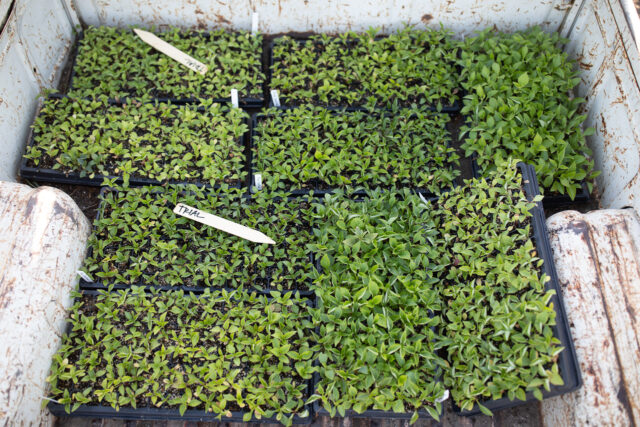 نهال های کوکب به شدت به سرما حساس هستند، بنابراین تا زمانی که هوا به اندازه کافی گرم نشده است آنها را در بیرون از خانه نکارید. ما معمولاً آنها را 3 تا 4 هفته پس از آخرین یخبندان بهاری خود پیوند می زنیم.
نهال های کوکب به شدت به سرما حساس هستند، بنابراین تا زمانی که هوا به اندازه کافی گرم نشده است آنها را در بیرون از خانه نکارید. ما معمولاً آنها را 3 تا 4 هفته پس از آخرین یخبندان بهاری خود پیوند می زنیم. 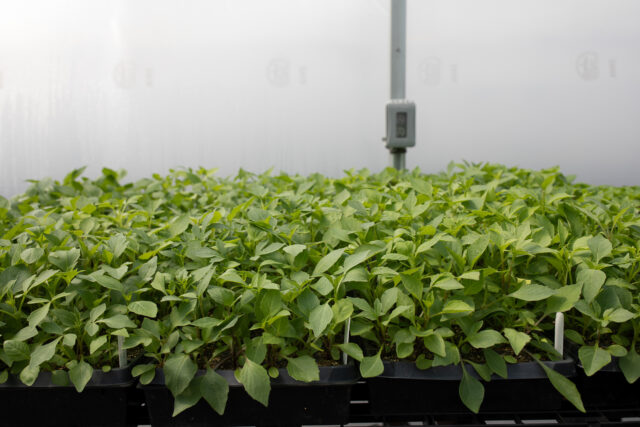 بذرها را باید حداقل 4 تا 8 هفته قبل از کاشت در داخل خانه شروع کنید. دانه های کوکب به طور پراکنده جوانه می زنند، بنابراین صبور باشید – آنها ظاهر می شوند اما ممکن است تا دو هفته طول بکشد. کاشت مستقیم در باغ توصیه نمی شود.
بذرها را باید حداقل 4 تا 8 هفته قبل از کاشت در داخل خانه شروع کنید. دانه های کوکب به طور پراکنده جوانه می زنند، بنابراین صبور باشید – آنها ظاهر می شوند اما ممکن است تا دو هفته طول بکشد. کاشت مستقیم در باغ توصیه نمی شود. 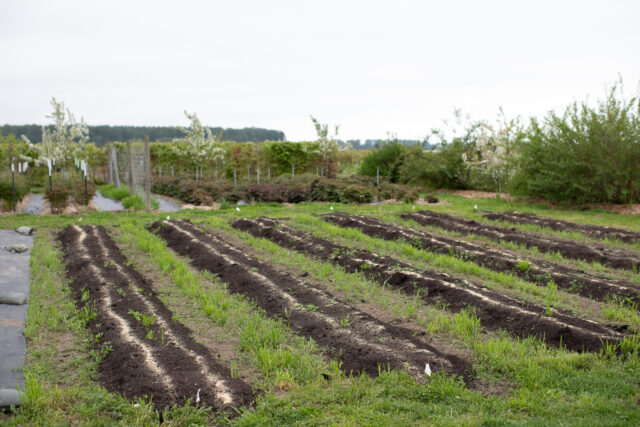 گل کوکب در خاک غنی و به شدت اصلاح شده بهترین عملکرد را دارد. ما بسترهای کاشت را با دوز سخاوتمندانه کمپوست و کود آلی آماده می کنیم و سپس آبیاری قطره ای را نصب می کنیم. در اینجا درباره آماده سازی خاک بیشتر بدانید.
گل کوکب در خاک غنی و به شدت اصلاح شده بهترین عملکرد را دارد. ما بسترهای کاشت را با دوز سخاوتمندانه کمپوست و کود آلی آماده می کنیم و سپس آبیاری قطره ای را نصب می کنیم. در اینجا درباره آماده سازی خاک بیشتر بدانید.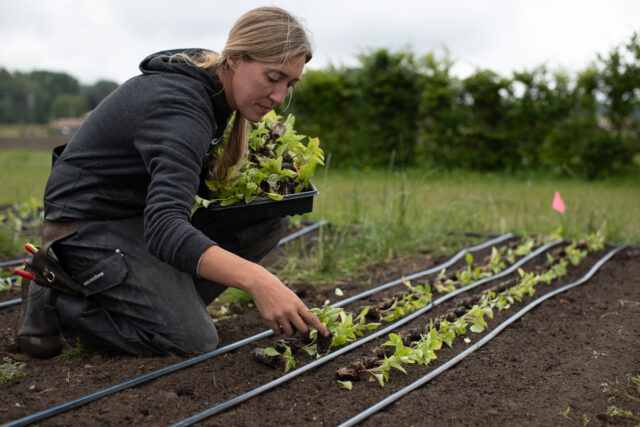
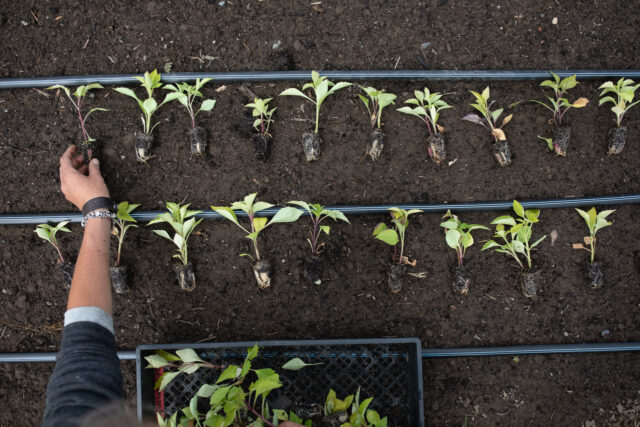 گیاهان را به فاصله 12 اینچ (30 سانتی متر) از هم قرار دهید و هفته ای دو بار به عمق آب دهید. (نهال کوکب را می توان بسیار نزدیکتر به هم رشد داد، با فاصله بین بوته ها به اندازه 4 اینچ (10 سانتی متر). این روش جنگلی از ساقه های بلند را تولید می کند و به این ترتیب است که اغلب پرورش دهندگان حرفه ای تعداد نهال هایی را که می توانند در یک فصل رشد دهند، افزایش می دهند. )
گیاهان را به فاصله 12 اینچ (30 سانتی متر) از هم قرار دهید و هفته ای دو بار به عمق آب دهید. (نهال کوکب را می توان بسیار نزدیکتر به هم رشد داد، با فاصله بین بوته ها به اندازه 4 اینچ (10 سانتی متر). این روش جنگلی از ساقه های بلند را تولید می کند و به این ترتیب است که اغلب پرورش دهندگان حرفه ای تعداد نهال هایی را که می توانند در یک فصل رشد دهند، افزایش می دهند. ) 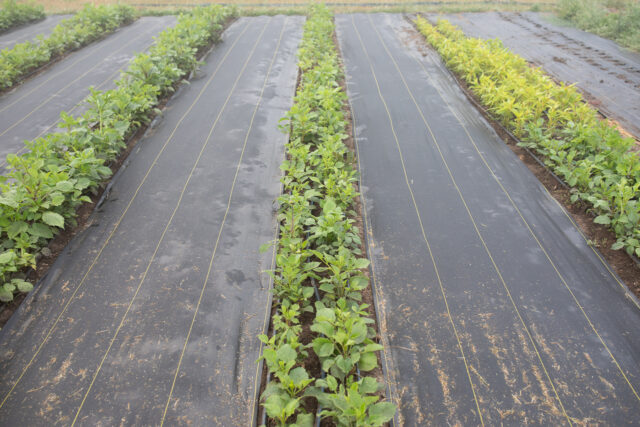 راب ها و حلزون ها عاشق نهال های گل محمدی هستند. ما Sluggo را بلافاصله پس از نشاء به کار می بریم تا از آنها در حین استقرار محافظت کنیم.
راب ها و حلزون ها عاشق نهال های گل محمدی هستند. ما Sluggo را بلافاصله پس از نشاء به کار می بریم تا از آنها در حین استقرار محافظت کنیم. 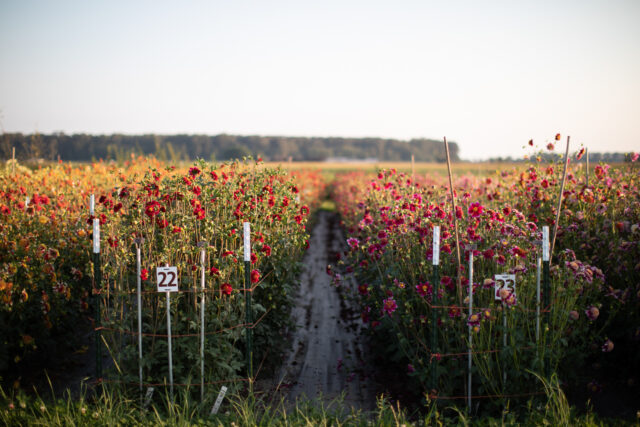 گیاهان به ناچار بلند و سنگین می شوند و نیاز به چنگ زدن محکم دارند که باید قبل از بزرگ شدن بیش از حد و از بین رفتن وزن شکوفه های خودنمایی کنند.
گیاهان به ناچار بلند و سنگین می شوند و نیاز به چنگ زدن محکم دارند که باید قبل از بزرگ شدن بیش از حد و از بین رفتن وزن شکوفه های خودنمایی کنند. 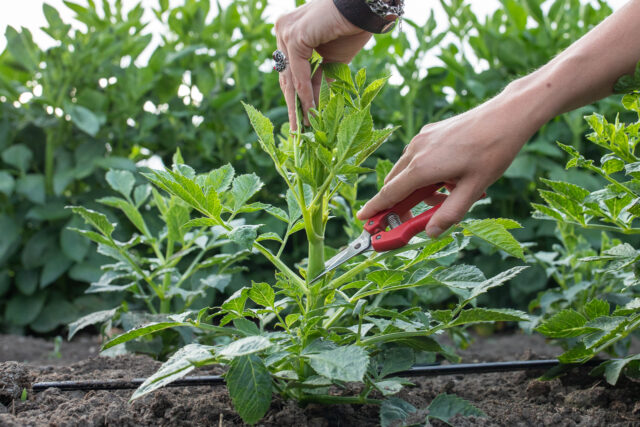 برای افزایش تعداد کلی گل ها و تشویق ساقه های بلند و قوی، باید آنها را نیشگون بگیرید. هنگامی که گیاهان 8 تا 12 اینچ (20 تا 30 سانتی متر) بلند شدند، از هرس های تیز برای جدا کردن 3 تا 4 اینچ (7 تا 10 سانتی متر) بالای مجموعه ای از برگ ها استفاده کنید. این باعث می شود که گیاه چندین ساقه را به زیر شاخه بفرستد.
برای افزایش تعداد کلی گل ها و تشویق ساقه های بلند و قوی، باید آنها را نیشگون بگیرید. هنگامی که گیاهان 8 تا 12 اینچ (20 تا 30 سانتی متر) بلند شدند، از هرس های تیز برای جدا کردن 3 تا 4 اینچ (7 تا 10 سانتی متر) بالای مجموعه ای از برگ ها استفاده کنید. این باعث می شود که گیاه چندین ساقه را به زیر شاخه بفرستد. 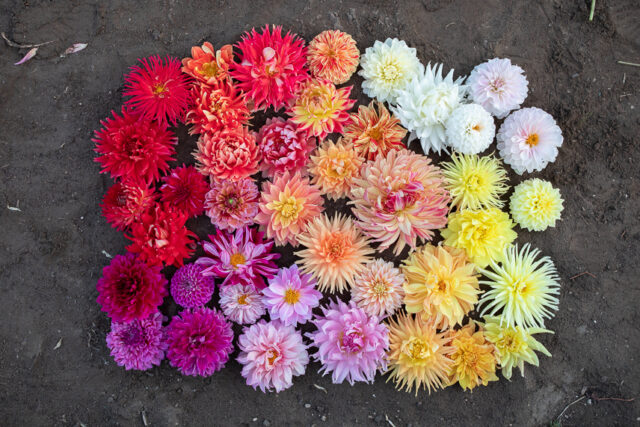 مگر اینکه غلاف های بذر را برای اهداف اصلاحی به بلوغ می گذارید، اغلب شکوفه های صرف شده را حذف کنید تا گیاهان انرژی خود را به جای تولید بذر در تولید گل صرف کنند.
مگر اینکه غلاف های بذر را برای اهداف اصلاحی به بلوغ می گذارید، اغلب شکوفه های صرف شده را حذف کنید تا گیاهان انرژی خود را به جای تولید بذر در تولید گل صرف کنند. 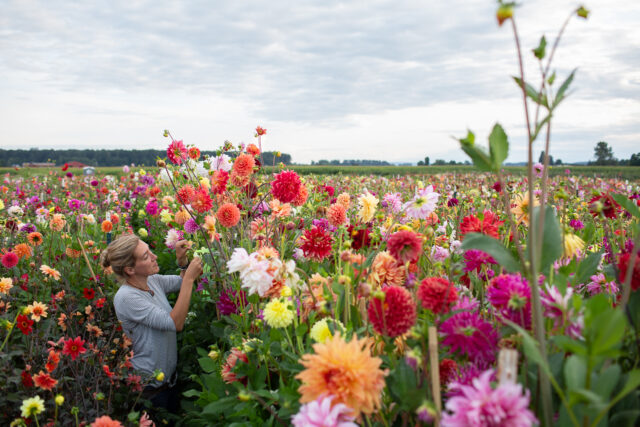 اگر انواعی را که دوست دارید کشف کردید، می توانید آنها را در پایان فصل برای کاشت مجدد در سال بعد بیابید.
اگر انواعی را که دوست دارید کشف کردید، می توانید آنها را در پایان فصل برای کاشت مجدد در سال بعد بیابید. 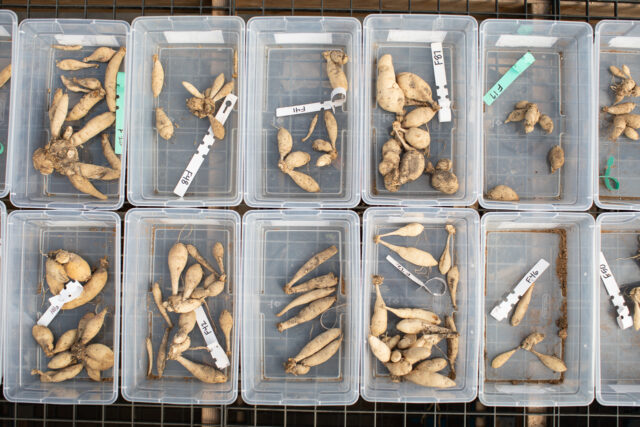 گل محمدی که از دانه رشد میکند، تودههای مینیاتوری غدههایی تولید میکند که اغلب به اندازه کافی بزرگ نیستند تا تقسیم شوند، بنابراین کل بسته را در یک کیسه Ziploc پر از پیت ماس یا ورمیکولیت در مکانی خنک که یخ نمیزند، بین 40 درجه فارنهایت تا 50 نگهداری میکنیم. درجه فارنهایت (4-10 درجه سانتیگراد).
گل محمدی که از دانه رشد میکند، تودههای مینیاتوری غدههایی تولید میکند که اغلب به اندازه کافی بزرگ نیستند تا تقسیم شوند، بنابراین کل بسته را در یک کیسه Ziploc پر از پیت ماس یا ورمیکولیت در مکانی خنک که یخ نمیزند، بین 40 درجه فارنهایت تا 50 نگهداری میکنیم. درجه فارنهایت (4-10 درجه سانتیگراد). 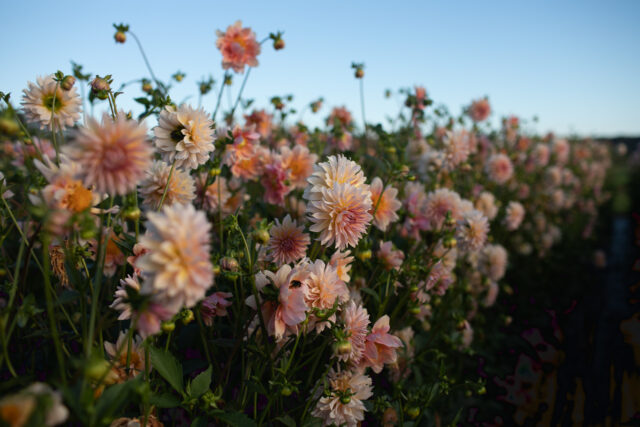 گل های کوکب چندان بادوام نیستند، اما می توانید با چیدن در مرحله مناسب و استفاده از نگهدارنده گل، حدود 5 روز به طول انجامید. گل کوکب بعد از برداشت زیاد باز نمی شود، بنابراین زمانی که تقریباً برای شکوفه های بزرگ و کامل باز است، انتخاب کنید.
گل های کوکب چندان بادوام نیستند، اما می توانید با چیدن در مرحله مناسب و استفاده از نگهدارنده گل، حدود 5 روز به طول انجامید. گل کوکب بعد از برداشت زیاد باز نمی شود، بنابراین زمانی که تقریباً برای شکوفه های بزرگ و کامل باز است، انتخاب کنید. 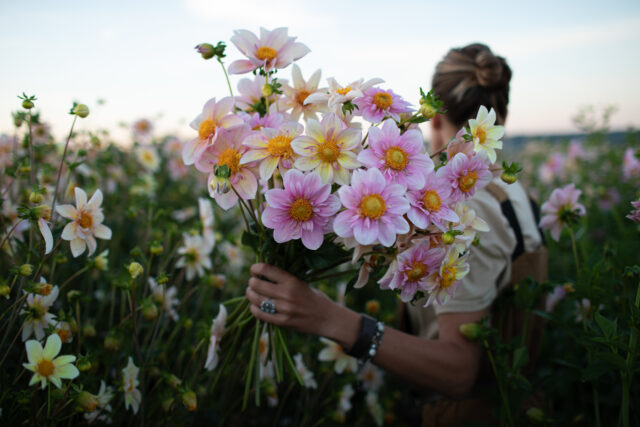 برای تکها و دیگر گونههای با مرکز باز، درست زمانی که گلبرگها در حال باز شدن هستند و قبل از اینکه زنبورها به آنها برسند، انتخاب کنید.
برای تکها و دیگر گونههای با مرکز باز، درست زمانی که گلبرگها در حال باز شدن هستند و قبل از اینکه زنبورها به آنها برسند، انتخاب کنید.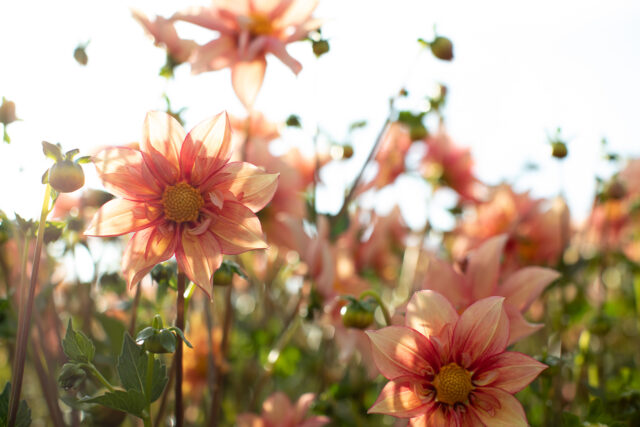 اگر گل محمدی را از دانه پرورش نداده اید، به شدت به شما توصیه می کنم آن را امتحان کنید – این بهترین شکار گنج است.
اگر گل محمدی را از دانه پرورش نداده اید، به شدت به شما توصیه می کنم آن را امتحان کنید – این بهترین شکار گنج است.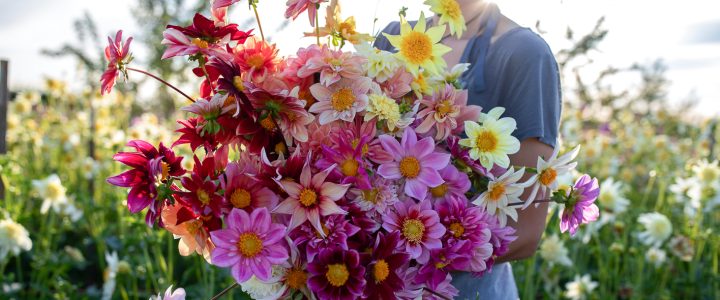
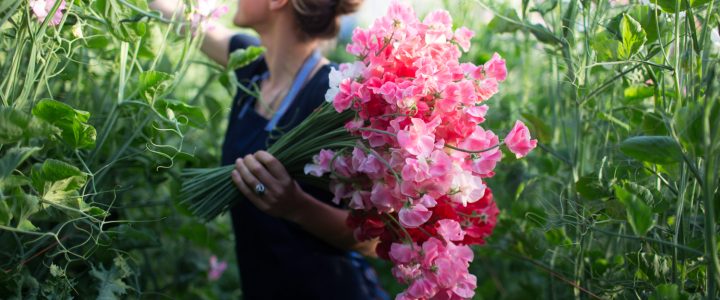
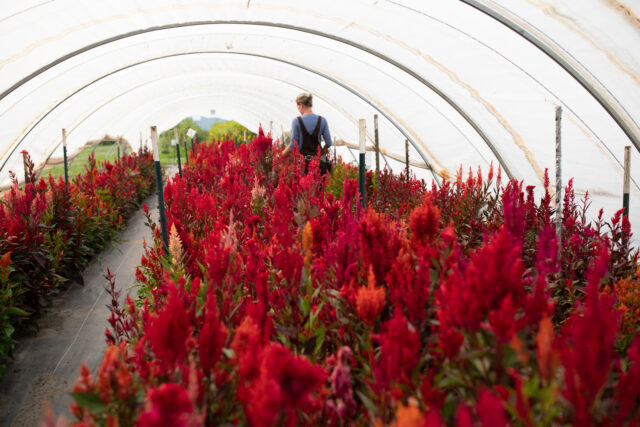 آنها هوای گرم و خشک را دوست دارند و به مراقبت بسیار کمی نیاز دارند. علاوه بر تولید ساقههای بسیار زیبا و بافتی که لهجه فوقالعادهای برای چیدمان دارند، میتوان آنها را در هر زمان از سال خشک کرد و استفاده کرد.
آنها هوای گرم و خشک را دوست دارند و به مراقبت بسیار کمی نیاز دارند. علاوه بر تولید ساقههای بسیار زیبا و بافتی که لهجه فوقالعادهای برای چیدمان دارند، میتوان آنها را در هر زمان از سال خشک کرد و استفاده کرد.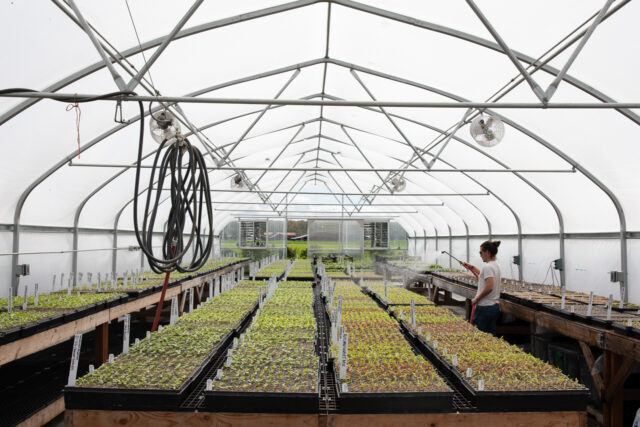 از آنجایی که سلوزیا بسیار به سرما حساس است، حتی کوچکترین یخبندان نیز پایان آنها خواهد بود، بنابراین بذر را خیلی زود شروع نکنید. ما تا حدود 6 هفته قبل از آخرین یخبندان بهاره خود صبر می کنیم تا آنها را در سینی های گلخانه بکاریم و تا زمانی که هوا به اندازه کافی گرم شود، کاشت را متوقف می کنیم.
از آنجایی که سلوزیا بسیار به سرما حساس است، حتی کوچکترین یخبندان نیز پایان آنها خواهد بود، بنابراین بذر را خیلی زود شروع نکنید. ما تا حدود 6 هفته قبل از آخرین یخبندان بهاره خود صبر می کنیم تا آنها را در سینی های گلخانه بکاریم و تا زمانی که هوا به اندازه کافی گرم شود، کاشت را متوقف می کنیم. 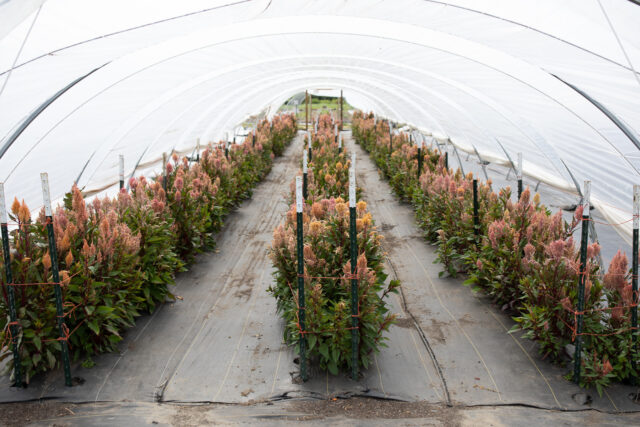 در آب و هوای خنک دریایی ما، سلوزیا باید در زیر پوشش کاشته شود تا بتواند رشد کند، اما در مناطق گرمتر جهان، آنها در خارج از خانه عالی عمل می کنند.
در آب و هوای خنک دریایی ما، سلوزیا باید در زیر پوشش کاشته شود تا بتواند رشد کند، اما در مناطق گرمتر جهان، آنها در خارج از خانه عالی عمل می کنند. 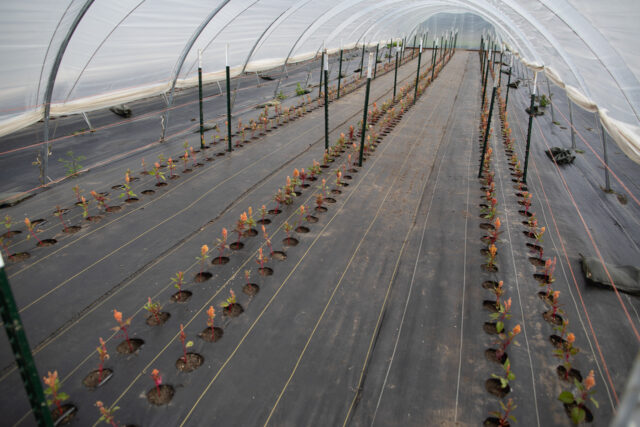 مانند هر گلی که در مزرعه ما رشد می کند، ما سعی می کنیم بهترین شروع ممکن را به آنها بدهیم و بستر کاشت خود را با دوز سخاوتمندانه کمپوست و کود آلی آماده کنیم.
مانند هر گلی که در مزرعه ما رشد می کند، ما سعی می کنیم بهترین شروع ممکن را به آنها بدهیم و بستر کاشت خود را با دوز سخاوتمندانه کمپوست و کود آلی آماده کنیم. 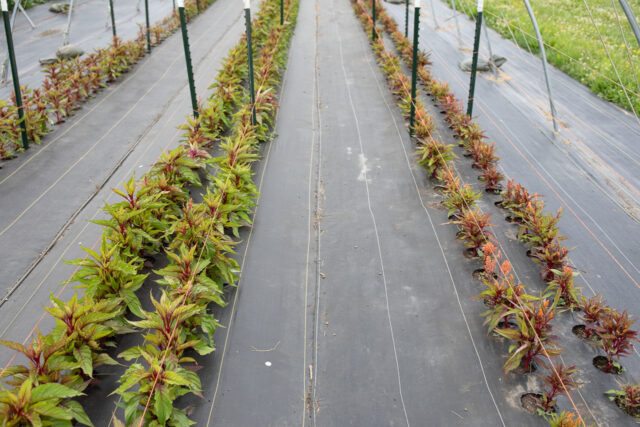 پس از آماده شدن بسترهای کاشت، خطوط آبیاری قطره ای را می گذاریم و سپس با لایه ای از پارچه منظره از پیش سوخته روی تخت ها را می پوشانیم. پارچه منظره گرما را می افزاید و علف های هرز را سرکوب می کند، اما برای موفقیت لازم نیست.
پس از آماده شدن بسترهای کاشت، خطوط آبیاری قطره ای را می گذاریم و سپس با لایه ای از پارچه منظره از پیش سوخته روی تخت ها را می پوشانیم. پارچه منظره گرما را می افزاید و علف های هرز را سرکوب می کند، اما برای موفقیت لازم نیست.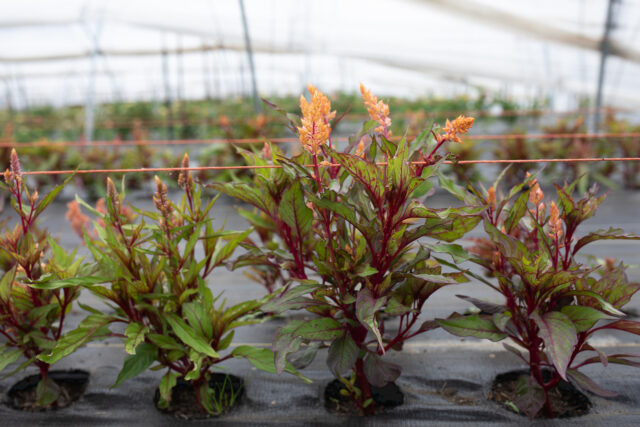 زمانی که گیاهان حدود 6 تا 8 اینچ (15 تا 20 سانتی متر) قد دارند، با بریدن 3 تا 4 اینچ (7 تا 10 سانتی متر) بالای ساقه مرکزی، به آن ها خرج می کنیم. این امر باعث انشعاب فراوان از پایه می شود و در نتیجه ده ها ساقه با اندازه کامل از هر گیاه ایجاد می شود.
زمانی که گیاهان حدود 6 تا 8 اینچ (15 تا 20 سانتی متر) قد دارند، با بریدن 3 تا 4 اینچ (7 تا 10 سانتی متر) بالای ساقه مرکزی، به آن ها خرج می کنیم. این امر باعث انشعاب فراوان از پایه می شود و در نتیجه ده ها ساقه با اندازه کامل از هر گیاه ایجاد می شود. 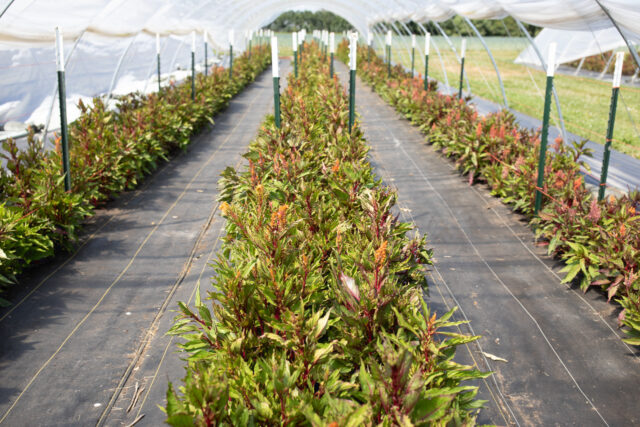 برای واریته های بلندتر، حتماً گیاهان را به صورت مرجانی یا چوبی قرار دهید تا از رشد سرسبز آنها حمایت کرده و از واژگون شدن گیاهان جلوگیری کنید.
برای واریته های بلندتر، حتماً گیاهان را به صورت مرجانی یا چوبی قرار دهید تا از رشد سرسبز آنها حمایت کرده و از واژگون شدن گیاهان جلوگیری کنید. 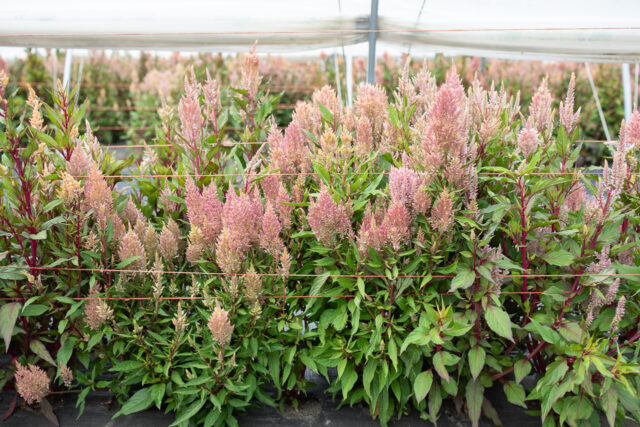 اگر سلوزیا خود را در ردیفهای بلند بکارید، میتوان آنها را با کوبیدن پایههای سنگین یا تیرهای T در اطراف محیط بستر و با استفاده از ریسمان مهارکننده برای ایجاد جعبهای با خط ریسمان برای ایستادن گیاهان جمع کرد. اگر آنها در چشم انداز رشد می کنند، گیاهان جداگانه را می توان با استفاده از ریسمان به چوب گره زد.
اگر سلوزیا خود را در ردیفهای بلند بکارید، میتوان آنها را با کوبیدن پایههای سنگین یا تیرهای T در اطراف محیط بستر و با استفاده از ریسمان مهارکننده برای ایجاد جعبهای با خط ریسمان برای ایستادن گیاهان جمع کرد. اگر آنها در چشم انداز رشد می کنند، گیاهان جداگانه را می توان با استفاده از ریسمان به چوب گره زد. 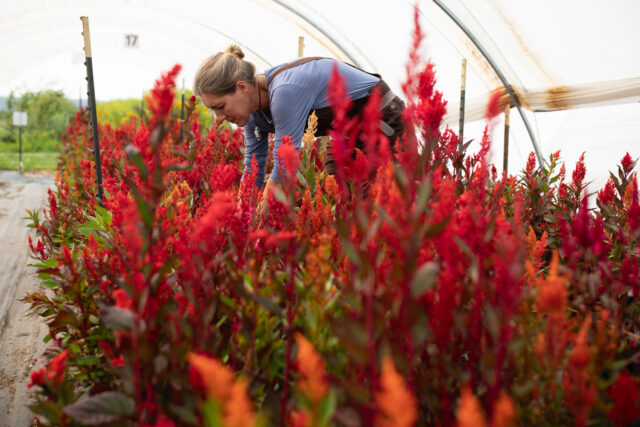 سر گل ها با بالغ شدن بزرگتر می شوند، بنابراین زمانی که به اندازه دلخواه شما هستند اما قبل از اینکه به دانه بروند، آنها را بچینید. 80 درصد از شاخ و برگ را در طول برداشت جدا کنید، زیرا مدت ها قبل از محو شدن سر گل در گلدان پژمرده می شود.
سر گل ها با بالغ شدن بزرگتر می شوند، بنابراین زمانی که به اندازه دلخواه شما هستند اما قبل از اینکه به دانه بروند، آنها را بچینید. 80 درصد از شاخ و برگ را در طول برداشت جدا کنید، زیرا مدت ها قبل از محو شدن سر گل در گلدان پژمرده می شود. 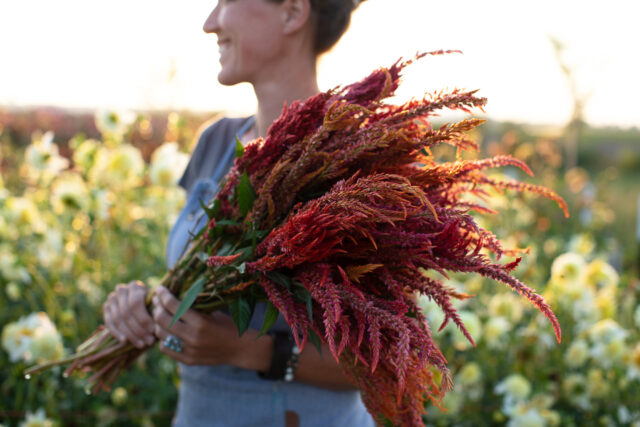 سلوزیا یک گل شاخه بریده با ماندگاری دیوانه کننده است و اغلب تا 2 هفته بدون مواد نگهدارنده باقی می ماند.
سلوزیا یک گل شاخه بریده با ماندگاری دیوانه کننده است و اغلب تا 2 هفته بدون مواد نگهدارنده باقی می ماند. 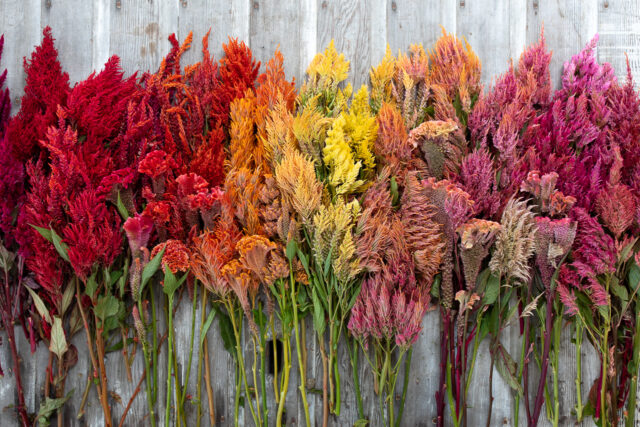 سلوزیاها اغلب نادیده گرفته می شوند و بیشتر به عنوان یک شاخ و برگ یا پرکننده در نظر گرفته می شوند. با این حال، هنگامی که تمام اشکال، اندازهها و رنگهای موجود و تطبیق پذیری آنها را برای چیدمان کشف کردید، قلاب خواهید شد. بعلاوه، آنها یکی از ساده ترین گل ها برای نجات دانه ها هستند.
سلوزیاها اغلب نادیده گرفته می شوند و بیشتر به عنوان یک شاخ و برگ یا پرکننده در نظر گرفته می شوند. با این حال، هنگامی که تمام اشکال، اندازهها و رنگهای موجود و تطبیق پذیری آنها را برای چیدمان کشف کردید، قلاب خواهید شد. بعلاوه، آنها یکی از ساده ترین گل ها برای نجات دانه ها هستند.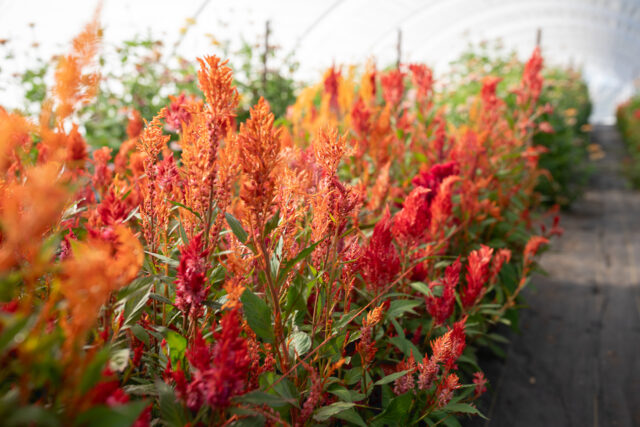 من دوست دارم در مورد تجربه شما در مورد این گروه شگفت انگیز از گیاهان بشنوم. آیا سلوسیا را پرورش می دهید یا قصد دارید آنها را در فصل آینده به باغ خود اضافه کنید؟ اگر چنین است، انواع مورد علاقه شما کدامند؟
من دوست دارم در مورد تجربه شما در مورد این گروه شگفت انگیز از گیاهان بشنوم. آیا سلوسیا را پرورش می دهید یا قصد دارید آنها را در فصل آینده به باغ خود اضافه کنید؟ اگر چنین است، انواع مورد علاقه شما کدامند؟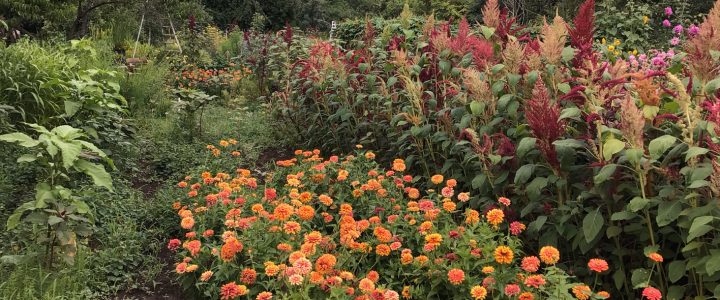
 Last season I trialed all of their pea varieties that are part of their breeding program. I was incredibly impressed—they were all beautiful and delicious, and like nothing I’d ever grown before. If you’re looking for some fun and tasty additions to your garden, be sure to check them out!
Last season I trialed all of their pea varieties that are part of their breeding program. I was incredibly impressed—they were all beautiful and delicious, and like nothing I’d ever grown before. If you’re looking for some fun and tasty additions to your garden, be sure to check them out!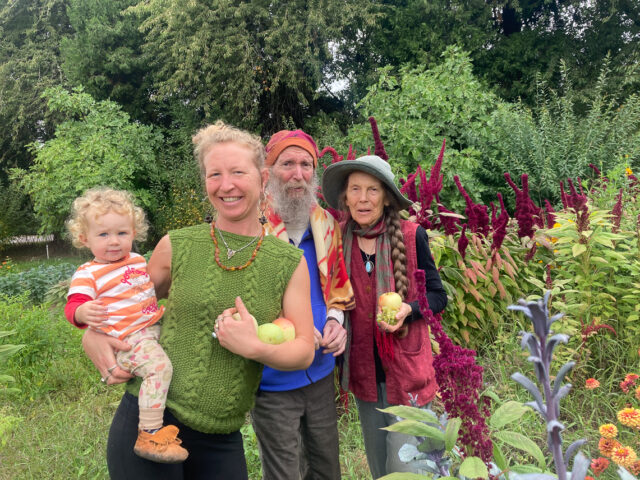 Dylana, I’m so happy I found out about your operation, and I’m really excited to introduce you to Floret readers. Can you share a little bit about the evolution of your seed company? From what I’ve read, the original Peace Seeds was founded in the 1970s by your parents, but more recently, you’ve renamed it Peace Seedlings. Can you talk about this transition and what you’re focusing on now?
Dylana, I’m so happy I found out about your operation, and I’m really excited to introduce you to Floret readers. Can you share a little bit about the evolution of your seed company? From what I’ve read, the original Peace Seeds was founded in the 1970s by your parents, but more recently, you’ve renamed it Peace Seedlings. Can you talk about this transition and what you’re focusing on now?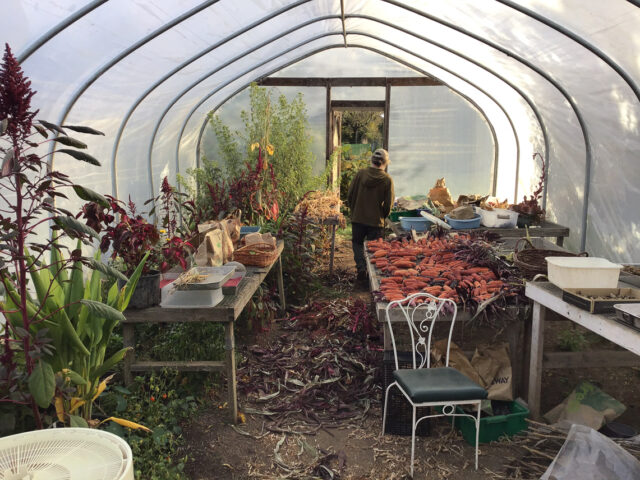 We were too young to think through how much we would confuse people who thought we sold seedlings, or why two different seed companies worked together on the same 3-acre piece of land that Mushroom and Linda had been leasing since the early ‘90s.
We were too young to think through how much we would confuse people who thought we sold seedlings, or why two different seed companies worked together on the same 3-acre piece of land that Mushroom and Linda had been leasing since the early ‘90s. 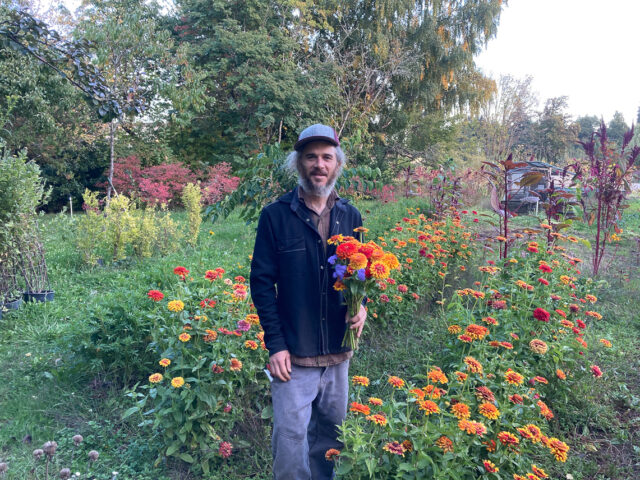
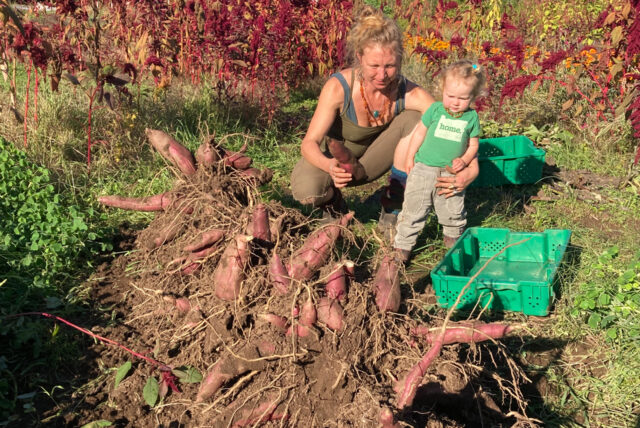 We’ve generally tried to be more diversified than specialized, but we have ended up being more attracted to certain plants for various reasons. We have done most of our breeding efforts in peas, corn, tomatoes, peppers, beans, marigolds, zinnias, sunflowers, and asters.
We’ve generally tried to be more diversified than specialized, but we have ended up being more attracted to certain plants for various reasons. We have done most of our breeding efforts in peas, corn, tomatoes, peppers, beans, marigolds, zinnias, sunflowers, and asters.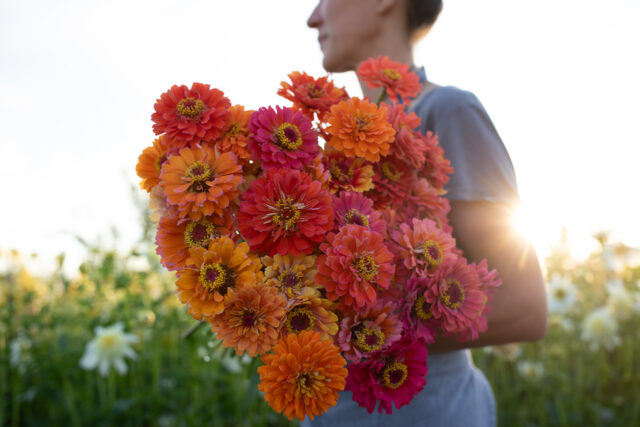 This past season we trialed all of your zinnia mixes and were amazed by the uniqueness and diversity found in each collection. I’ve never seen anything like them before! Would you be willing to share a little more about how these varieties came to be, especially the Day Glow Mix?
This past season we trialed all of your zinnia mixes and were amazed by the uniqueness and diversity found in each collection. I’ve never seen anything like them before! Would you be willing to share a little more about how these varieties came to be, especially the Day Glow Mix?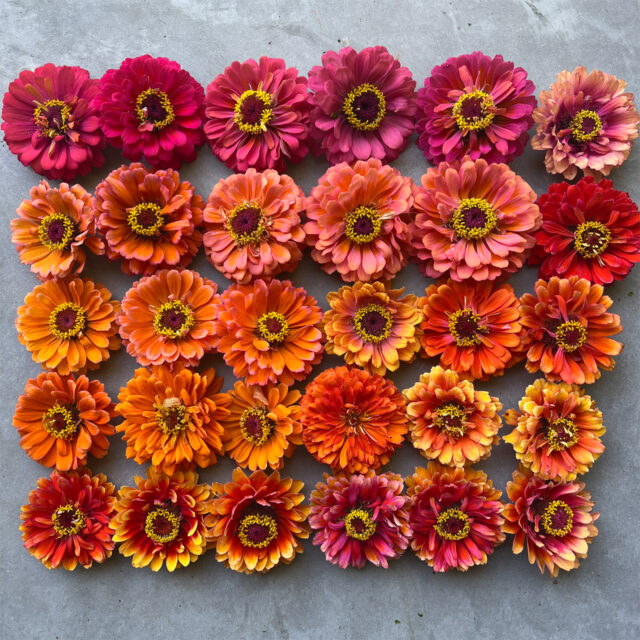 Simultaneously we grew out as many zinnias as we could find in the commercial market that had unique colors or morphology and were tall enough for cut flowers.
Simultaneously we grew out as many zinnias as we could find in the commercial market that had unique colors or morphology and were tall enough for cut flowers. 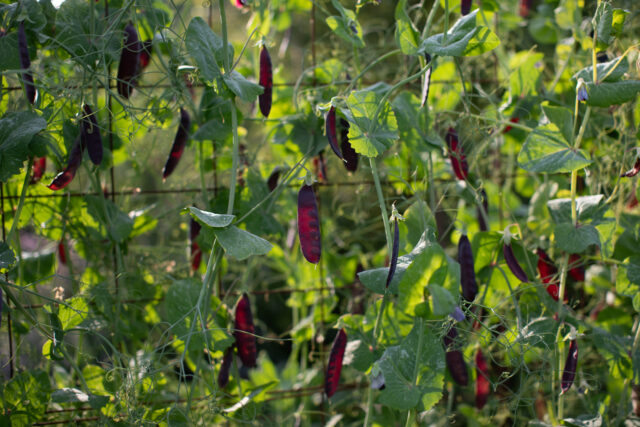 In addition to trialing your zinnias, I also grew all of your snow and snap pea varieties, including ‘Ruby Beauty’, ‘Blushing Beauty’, ‘Amethyst Beauty’ (pictured above), ‘Opal Beauty’, ‘Spring Rose’, ‘Magnolia Blossom’, and ‘Spring Blush’. I was blown away by the range of unique colors and exaggerated tendrils on many of the varieties. They were all incredibly delicious, too. Can you share a little bit more about your pea breeding efforts and a few of your favorites or new varieties that you’d recommend trying?
In addition to trialing your zinnias, I also grew all of your snow and snap pea varieties, including ‘Ruby Beauty’, ‘Blushing Beauty’, ‘Amethyst Beauty’ (pictured above), ‘Opal Beauty’, ‘Spring Rose’, ‘Magnolia Blossom’, and ‘Spring Blush’. I was blown away by the range of unique colors and exaggerated tendrils on many of the varieties. They were all incredibly delicious, too. Can you share a little bit more about your pea breeding efforts and a few of your favorites or new varieties that you’d recommend trying? 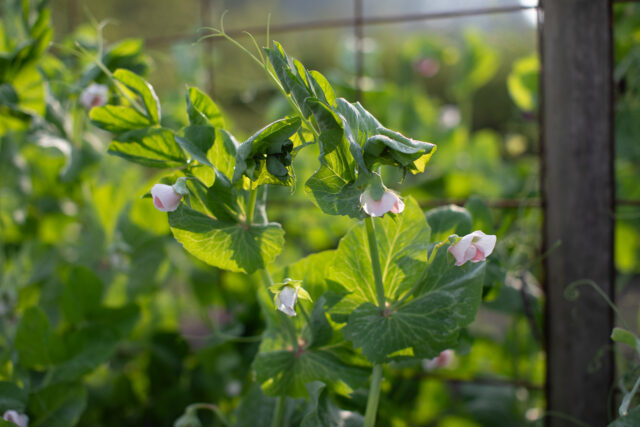 The first pea we bred came from being enchanted by a pink-flowered New Zealand pea that a friend was growing and we knew we needed to use that as a parent. Using that pink-flowered pea crossed with ‘Green Beauty’ we made ‘Spring Rose’ (pictured above), which had the unique pink flower trait we were looking for. We hoped crossing yellow peas with purple peas would open up the possibilities of color and hopefully make a “red” pea.
The first pea we bred came from being enchanted by a pink-flowered New Zealand pea that a friend was growing and we knew we needed to use that as a parent. Using that pink-flowered pea crossed with ‘Green Beauty’ we made ‘Spring Rose’ (pictured above), which had the unique pink flower trait we were looking for. We hoped crossing yellow peas with purple peas would open up the possibilities of color and hopefully make a “red” pea. 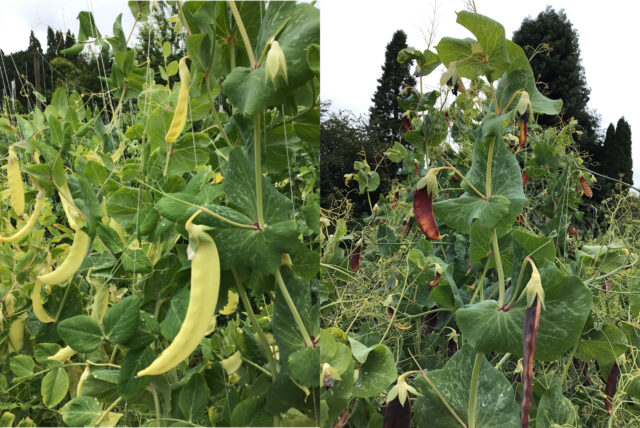
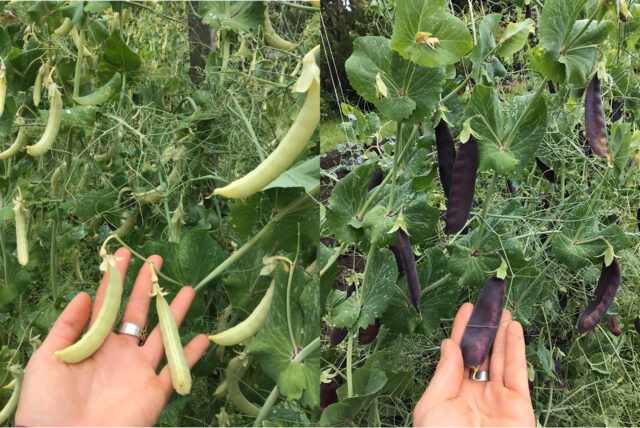 New Peace Seedlings peas include ‘Opal Beauty’ (a golden snow vine pea; pictured above, top left), ‘Amethyst Beauty’ (a purple snow vine pea), and ‘Blushing Beauty’ (a purple splash over green snow pea); two beautiful magenta-colored varieties named ‘Ruby Beauty’ (a snow vine pea; pictured above, top right) and ‘Ruby Crescent’ (a snap vine pea); plus, ‘Opal Crescent’ (a yellow snap pea; pictured above, bottom left), ‘Purple Beauty’ (a dark purple snow pea; pictured above, bottom right), and ‘Sweet Rain’ (an XL green snap pea).
New Peace Seedlings peas include ‘Opal Beauty’ (a golden snow vine pea; pictured above, top left), ‘Amethyst Beauty’ (a purple snow vine pea), and ‘Blushing Beauty’ (a purple splash over green snow pea); two beautiful magenta-colored varieties named ‘Ruby Beauty’ (a snow vine pea; pictured above, top right) and ‘Ruby Crescent’ (a snap vine pea); plus, ‘Opal Crescent’ (a yellow snap pea; pictured above, bottom left), ‘Purple Beauty’ (a dark purple snow pea; pictured above, bottom right), and ‘Sweet Rain’ (an XL green snap pea).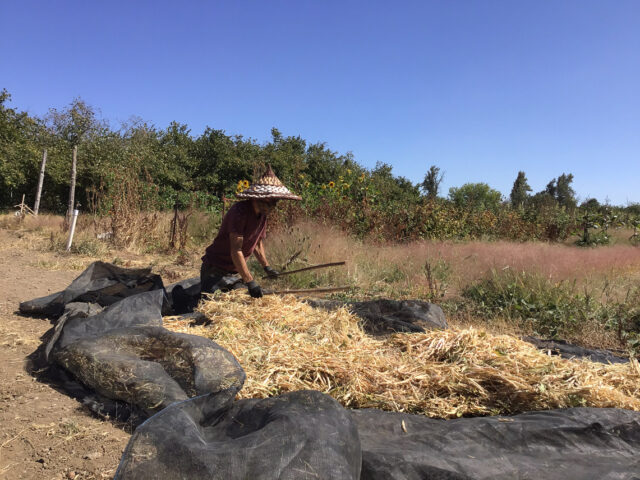
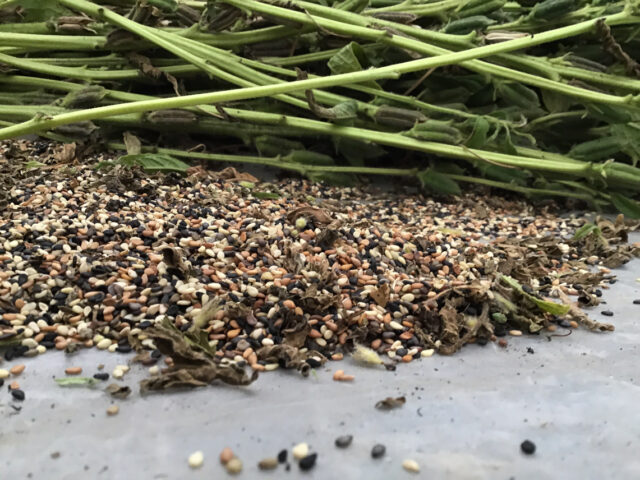 All of the varieties that you offer are open-pollinated and public domain. Can you explain a little more about what it means for a variety to be in the public domain, and why it’s important to you to offer these varieties?
All of the varieties that you offer are open-pollinated and public domain. Can you explain a little more about what it means for a variety to be in the public domain, and why it’s important to you to offer these varieties?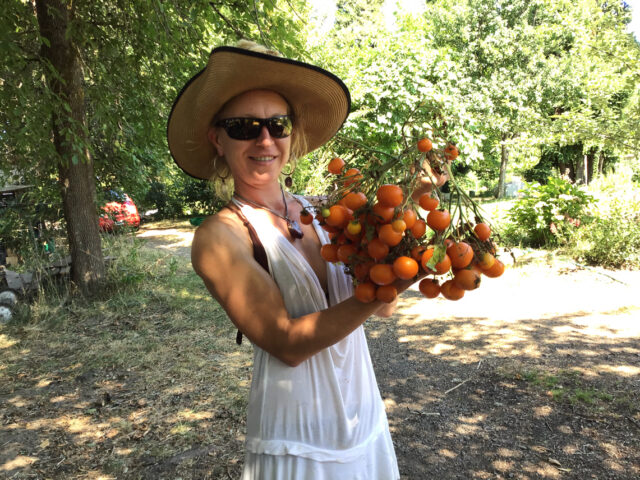 While you breed new varieties, you also focus on the preservation of heirloom varieties, which is wonderful to see. How did you become interested in preservation?
While you breed new varieties, you also focus on the preservation of heirloom varieties, which is wonderful to see. How did you become interested in preservation?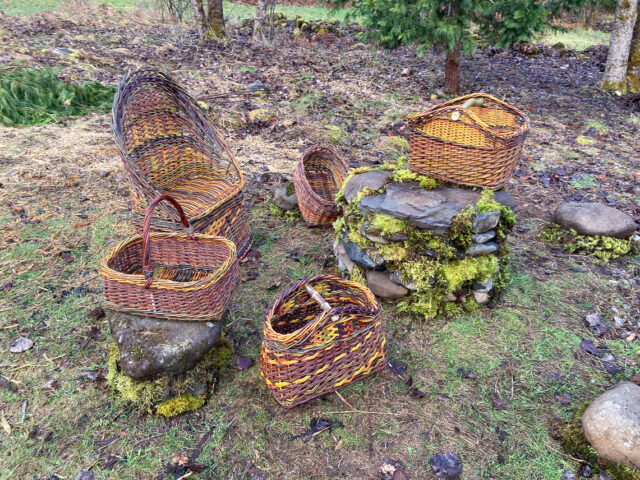 I have to say, I love that you’re still doing business in the old-school way with a simple listing of your offerings and requiring people to mail in a handwritten order along with their payment. It’s such a refreshing change from the fast-paced digital world that I’m used to. For readers who haven’t ordered from you before, can you walk us through the process of ordering your seeds?
I have to say, I love that you’re still doing business in the old-school way with a simple listing of your offerings and requiring people to mail in a handwritten order along with their payment. It’s such a refreshing change from the fast-paced digital world that I’m used to. For readers who haven’t ordered from you before, can you walk us through the process of ordering your seeds?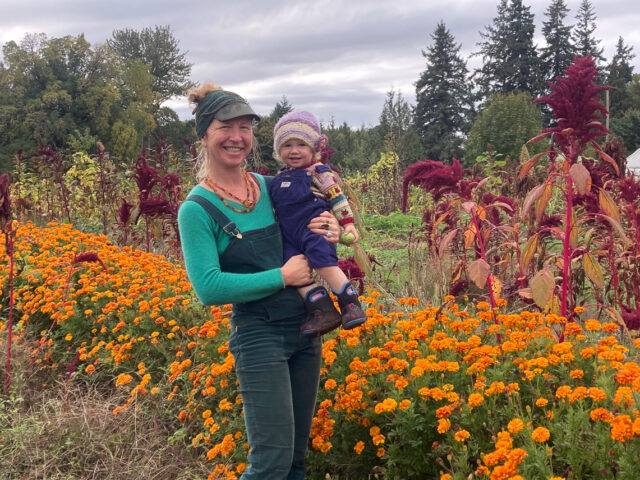
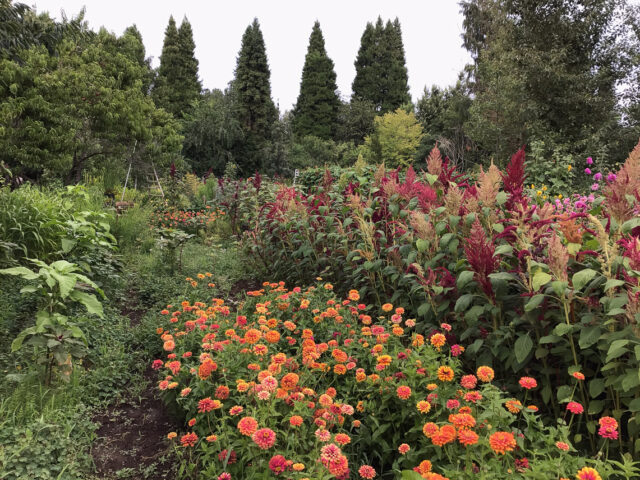 To accompany this interview, we’re giving away five special seed bundles. Each bundle will contain Peace Seedlings special Day Glow Mix zinnias, ‘Spring Blush’ snap peas, and ‘Ruby Beauty’ snow peas.
To accompany this interview, we’re giving away five special seed bundles. Each bundle will contain Peace Seedlings special Day Glow Mix zinnias, ‘Spring Blush’ snap peas, and ‘Ruby Beauty’ snow peas. 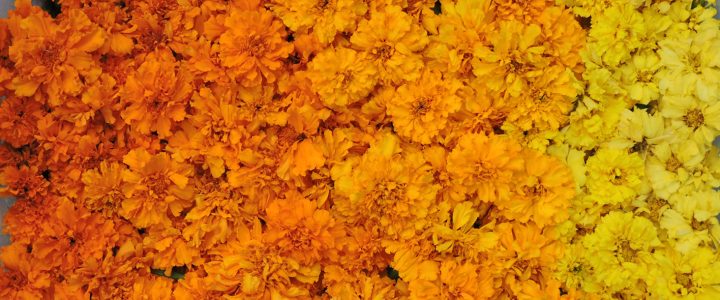
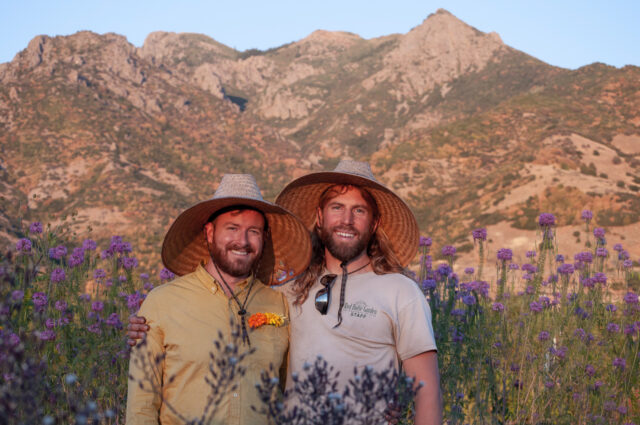
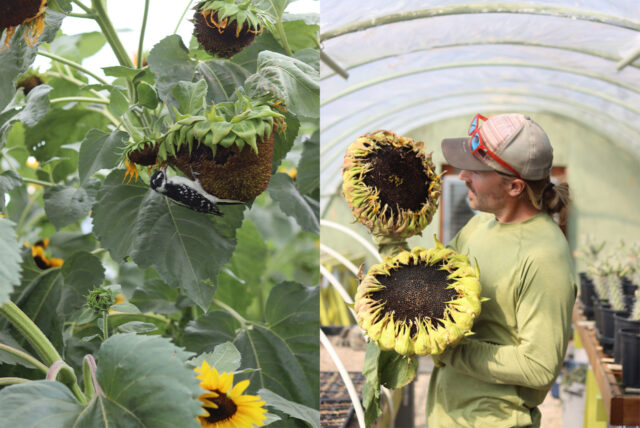 Guy: I have been involved in a variety of ethnobotanical projects through work, study, and my personal life, and experiencing communities with deep-rooted, thriving relationships with plants and ecosystems has been very impactful. This has inspired me to look more deeply at how I engage with plants and the received knowledge and perspectives gained from my own cultural upbringing and schooling.
Guy: I have been involved in a variety of ethnobotanical projects through work, study, and my personal life, and experiencing communities with deep-rooted, thriving relationships with plants and ecosystems has been very impactful. This has inspired me to look more deeply at how I engage with plants and the received knowledge and perspectives gained from my own cultural upbringing and schooling.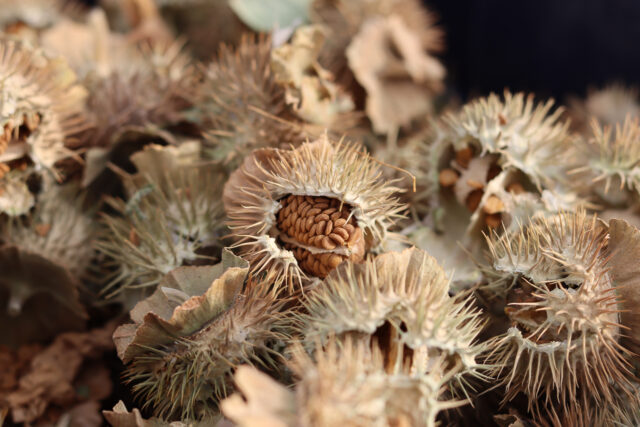 My work in field botany, habitat restoration, and native plant and seed production has developed my knowledge of plant ecology of various regions in the western U.S. That knowledge gives me insight into underutilized plant species. I also learned many skills, techniques, and perspectives that are transferable to seed farming and provide additional avenues for us to explore, such as seed production for ecological restoration efforts.
My work in field botany, habitat restoration, and native plant and seed production has developed my knowledge of plant ecology of various regions in the western U.S. That knowledge gives me insight into underutilized plant species. I also learned many skills, techniques, and perspectives that are transferable to seed farming and provide additional avenues for us to explore, such as seed production for ecological restoration efforts.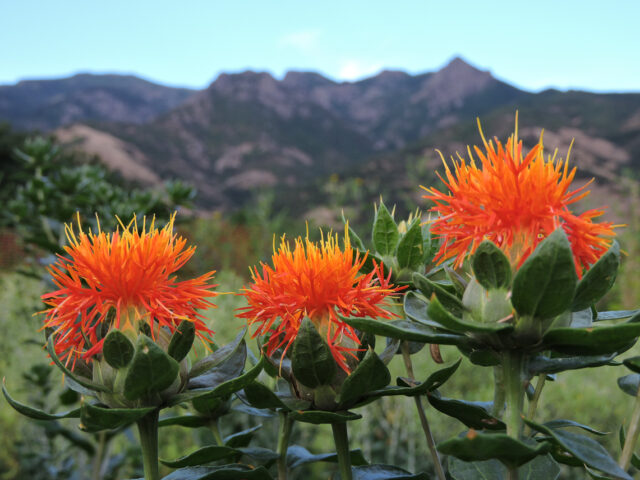 In the U.S., seed companies are often located on the west or east coast. What led you to start Grand Prismatic in Utah?
In the U.S., seed companies are often located on the west or east coast. What led you to start Grand Prismatic in Utah? 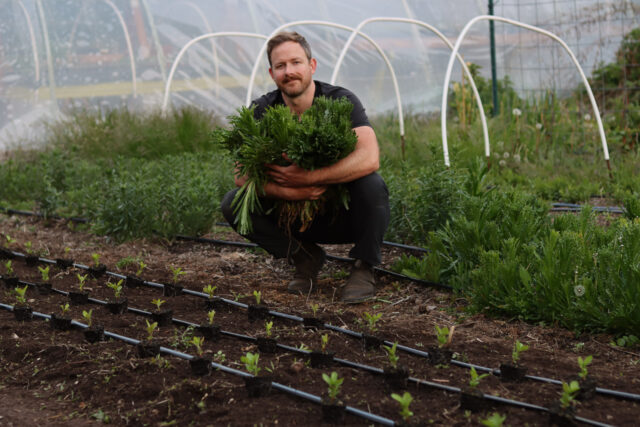 Compared to our mild climate here in the Pacific Northwest, the Intermountain West seems to experience more extreme temperatures and weather. How have those conditions impacted the varieties that you choose to grow, and has this changed over time?
Compared to our mild climate here in the Pacific Northwest, the Intermountain West seems to experience more extreme temperatures and weather. How have those conditions impacted the varieties that you choose to grow, and has this changed over time?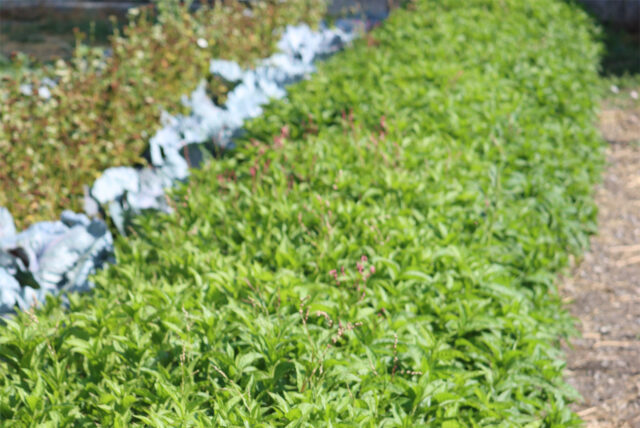
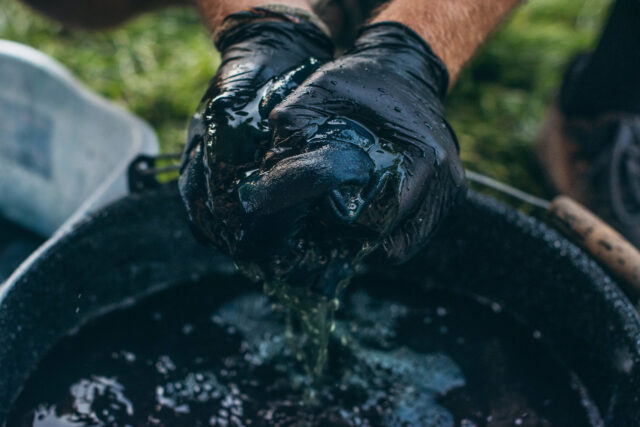 An example of this longer-term experimentation with varieties is our time spent with
An example of this longer-term experimentation with varieties is our time spent with 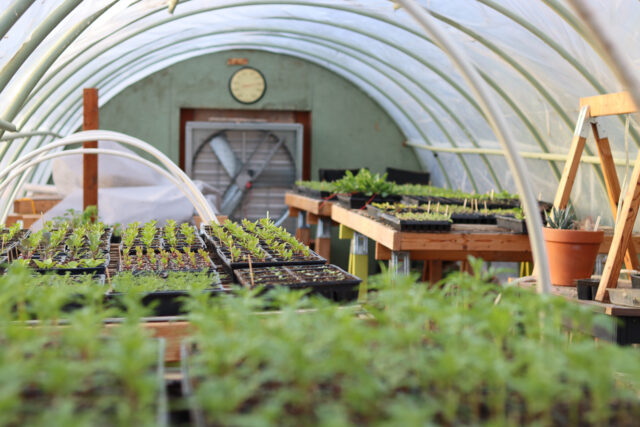 In the early years of Floret, I rented land from a neighbor and I was interested to read that you also lease some of your growing area. Can you tell us a little more about how you came to find your current location?
In the early years of Floret, I rented land from a neighbor and I was interested to read that you also lease some of your growing area. Can you tell us a little more about how you came to find your current location?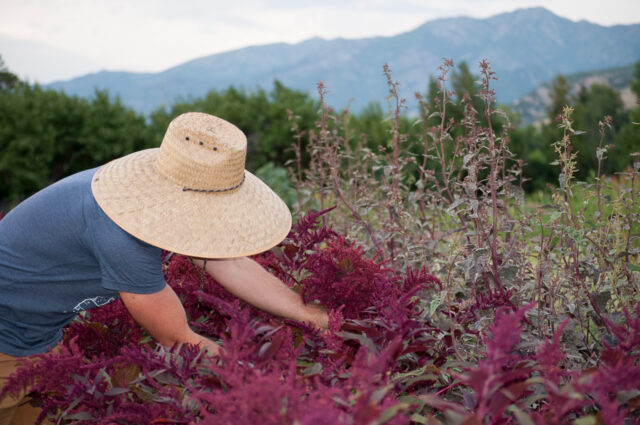 There are definitely constraints that come with leasing land, and in many cases, like our first lease, you may end up losing all the work you have invested, but the financial commitment of leasing property is far less burdensome than having large land debts.
There are definitely constraints that come with leasing land, and in many cases, like our first lease, you may end up losing all the work you have invested, but the financial commitment of leasing property is far less burdensome than having large land debts. 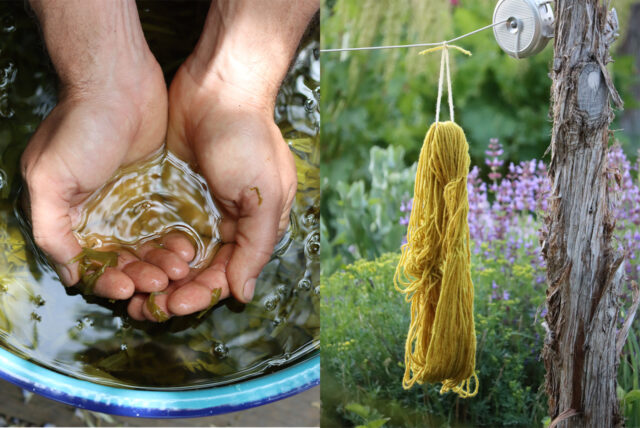
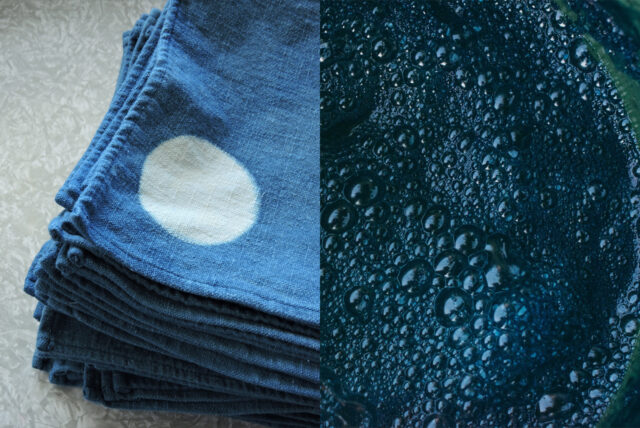 Your online shop features an extensive collection of varieties that can be used for natural dyeing. What drew you to this special group of plants, and how do you go about selecting the seeds that you offer?
Your online shop features an extensive collection of varieties that can be used for natural dyeing. What drew you to this special group of plants, and how do you go about selecting the seeds that you offer?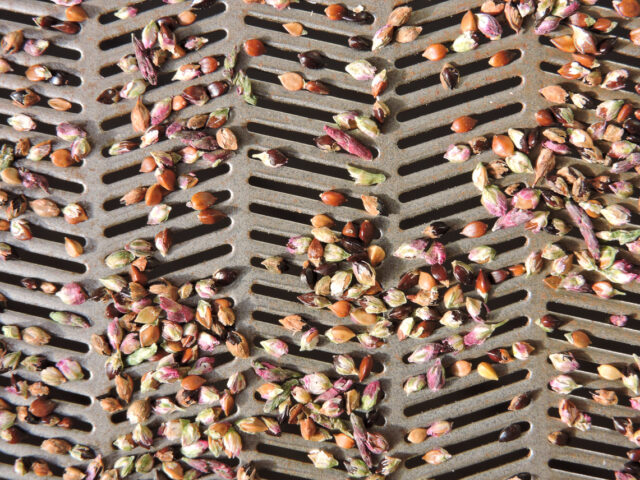 Many of the varieties you grow at Grand Prismatic are open-pollinated. Can you tell our readers a little more about what distinguishes open-pollinated plants from other varieties and why you’ve chosen to focus on them?
Many of the varieties you grow at Grand Prismatic are open-pollinated. Can you tell our readers a little more about what distinguishes open-pollinated plants from other varieties and why you’ve chosen to focus on them?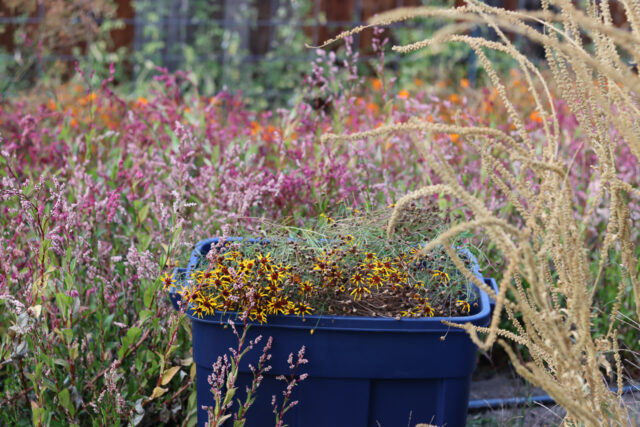 You talk a lot about the importance of farmers and gardeners being able to save their own seeds, which is something I’m passionate about as well. Do you have any advice or tips for those of our readers who haven’t tried their hand at seed saving yet?
You talk a lot about the importance of farmers and gardeners being able to save their own seeds, which is something I’m passionate about as well. Do you have any advice or tips for those of our readers who haven’t tried their hand at seed saving yet?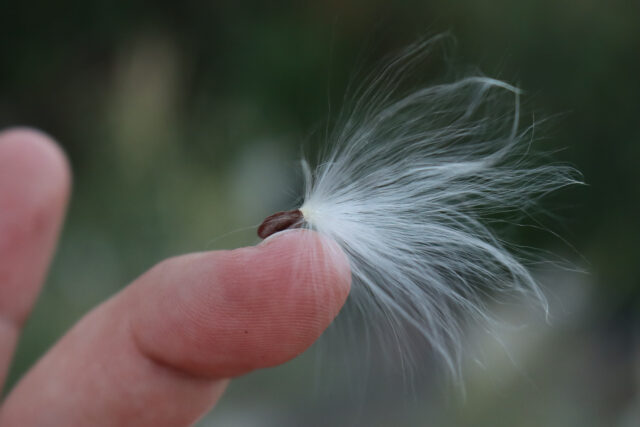 The seeds of many non-domesticated plants retain innate physical and chemical mechanisms that prevent the seeds from germinating all at once or without special environmental signals that are tied to survival in the plant’s natural surroundings. These signals are often connected to patterns of temperature, moisture, decomposition, wildfire, or other phenomena of the natural world that the plants have evolved with and adapted to. Because of this, undomesticated crops can be quite frustrating for beginning gardeners or seed savers.
The seeds of many non-domesticated plants retain innate physical and chemical mechanisms that prevent the seeds from germinating all at once or without special environmental signals that are tied to survival in the plant’s natural surroundings. These signals are often connected to patterns of temperature, moisture, decomposition, wildfire, or other phenomena of the natural world that the plants have evolved with and adapted to. Because of this, undomesticated crops can be quite frustrating for beginning gardeners or seed savers. 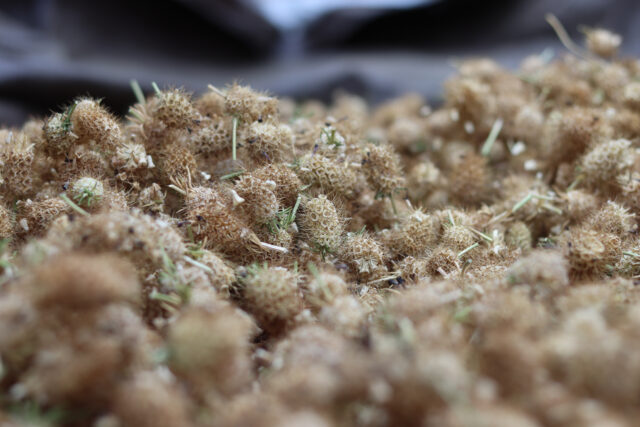 Our second recommendation is to focus on plants that are self-fertile, meaning that their own flowers can pollinate themselves. With self-fertile plants, you are more likely to end up saving seed for a plant that will produce the vegetables, flowers, etc. that you expect. With outcrossing plants, you’ll need to be much more aware of nearby plants of the same species that may cross with your crop.
Our second recommendation is to focus on plants that are self-fertile, meaning that their own flowers can pollinate themselves. With self-fertile plants, you are more likely to end up saving seed for a plant that will produce the vegetables, flowers, etc. that you expect. With outcrossing plants, you’ll need to be much more aware of nearby plants of the same species that may cross with your crop. 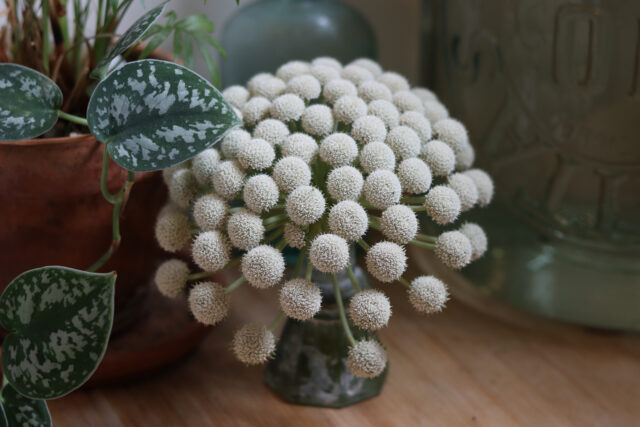 I’m impressed by the number of unique and hard-to-find varieties that are included in your catalog. What criteria do you use when selecting the seeds that you offer each year?
I’m impressed by the number of unique and hard-to-find varieties that are included in your catalog. What criteria do you use when selecting the seeds that you offer each year?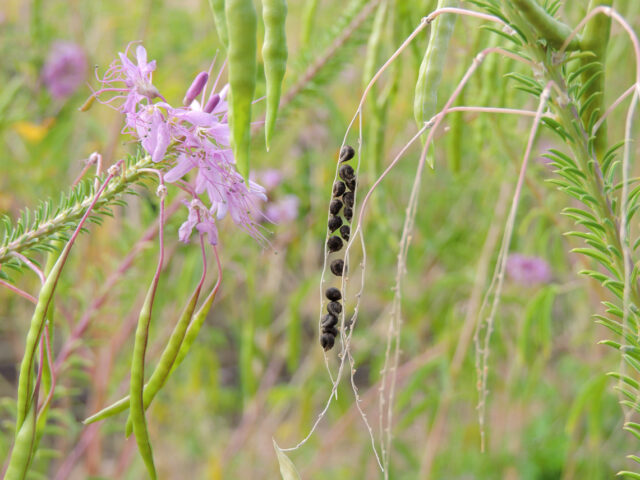 Another goal for our selections is to highlight less commonly known and grown native flora from different regions. We want to provide plants that offer something special to gardeners, whether it is a chance to enhance/support the local ecology by including local wildflowers in their growing space, propagate uncommon wild food and medicine plants, or to incorporate tough, adaptable plants in their garden that create beauty while using fewer resources.
Another goal for our selections is to highlight less commonly known and grown native flora from different regions. We want to provide plants that offer something special to gardeners, whether it is a chance to enhance/support the local ecology by including local wildflowers in their growing space, propagate uncommon wild food and medicine plants, or to incorporate tough, adaptable plants in their garden that create beauty while using fewer resources.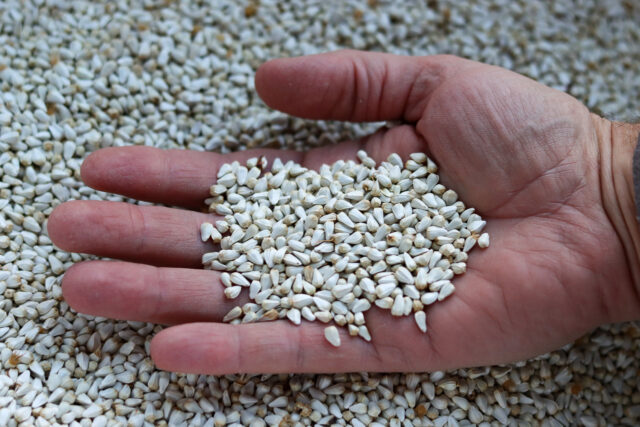 Last year you offered a few varieties that were part of the Open Source Seed Initiative (OSSI). Can you tell us a little more about OSSI and its benefits?
Last year you offered a few varieties that were part of the Open Source Seed Initiative (OSSI). Can you tell us a little more about OSSI and its benefits? 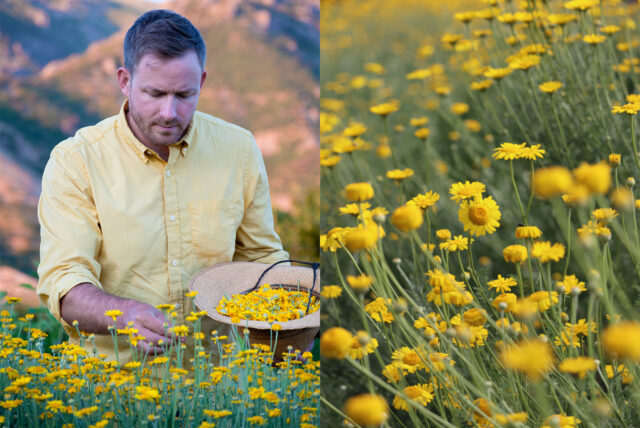 What are you most excited about for the upcoming growing season, and what is the best way for people to stay up to date with your current offerings?
What are you most excited about for the upcoming growing season, and what is the best way for people to stay up to date with your current offerings? 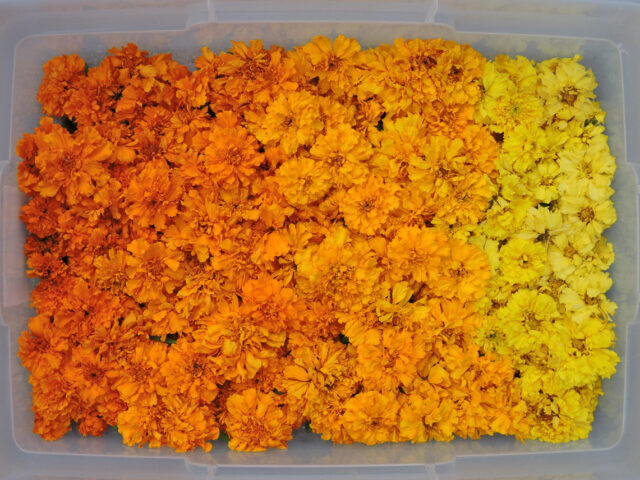 Grand Prismatic is offering a generous giveaway of five $100 gift cards to their online shop. For a chance to win, simply post a comment below telling us about your favorite dye plant, or one that you’re interested in trying. Winners will be announced on January 16. Please note: This giveaway is open to U.S. and Canadian residents only.
Grand Prismatic is offering a generous giveaway of five $100 gift cards to their online shop. For a chance to win, simply post a comment below telling us about your favorite dye plant, or one that you’re interested in trying. Winners will be announced on January 16. Please note: This giveaway is open to U.S. and Canadian residents only.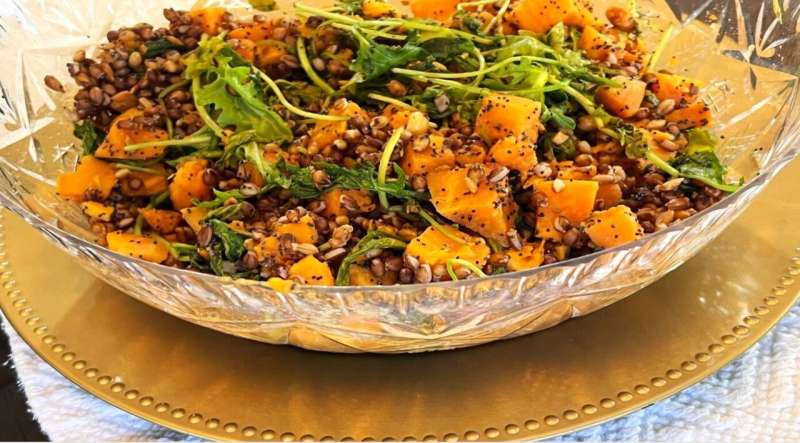
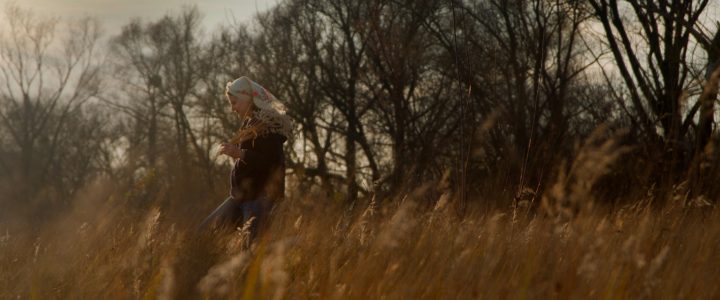
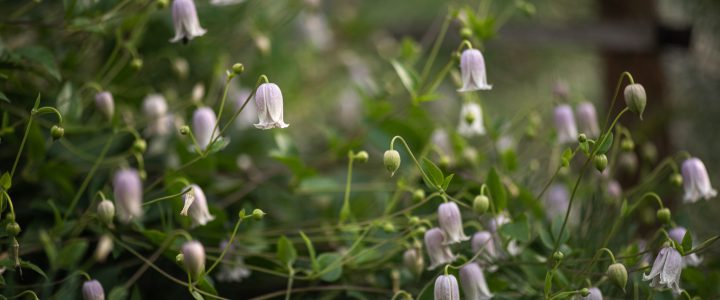



 Alla, thank you so much for taking the time to share more about your flower journey. You live in Kharkiv in the Eastern part of Ukraine, and your garden is located in the heart of the city. Can you tell us what it’s like? What kind of plants do you grow?
Alla, thank you so much for taking the time to share more about your flower journey. You live in Kharkiv in the Eastern part of Ukraine, and your garden is located in the heart of the city. Can you tell us what it’s like? What kind of plants do you grow?  You have so m
You have so m
 There are nearly 400 unique species of clematis but as I understand from your book, they fall into three main groups. Can you talk a bit more about the different groups, their bloom time, and their pruning needs?
There are nearly 400 unique species of clematis but as I understand from your book, they fall into three main groups. Can you talk a bit more about the different groups, their bloom time, and their pruning needs?  If people are interested in growing clematis, what do they need to know? Are there any varieties that you’d recommend for beginners?
If people are interested in growing clematis, what do they need to know? Are there any varieties that you’d recommend for beginners?  Until very recently, I was unaware that so many clematis varieties could be started from seed. Can you share more about this process?
Until very recently, I was unaware that so many clematis varieties could be started from seed. Can you share more about this process? 
 You have a huge offering of seeds that you grow and also sell. How many varieties of clematis do you currently have in your garden, and can you share some favorites?
You have a huge offering of seeds that you grow and also sell. How many varieties of clematis do you currently have in your garden, and can you share some favorites? 
 I love incorporating clematis vines into arrangements, especially larger statement pieces. What are your favorite varieties for arranging with? Do you have any tricks for maximizing vase life?
I love incorporating clematis vines into arrangements, especially larger statement pieces. What are your favorite varieties for arranging with? Do you have any tricks for maximizing vase life? 
 You are such a talented photographer and clearly have a passion for this work. How did you get your start?
You are such a talented photographer and clearly have a passion for this work. How did you get your start? Because of this, my husband
Because of this, my husband  Ukraine is a very young country when it comes to gardening and has only recently been influenced by the Western world. What do you see for the future of Ukrainian gardens?
Ukraine is a very young country when it comes to gardening and has only recently been influenced by the Western world. What do you see for the future of Ukrainian gardens? 
